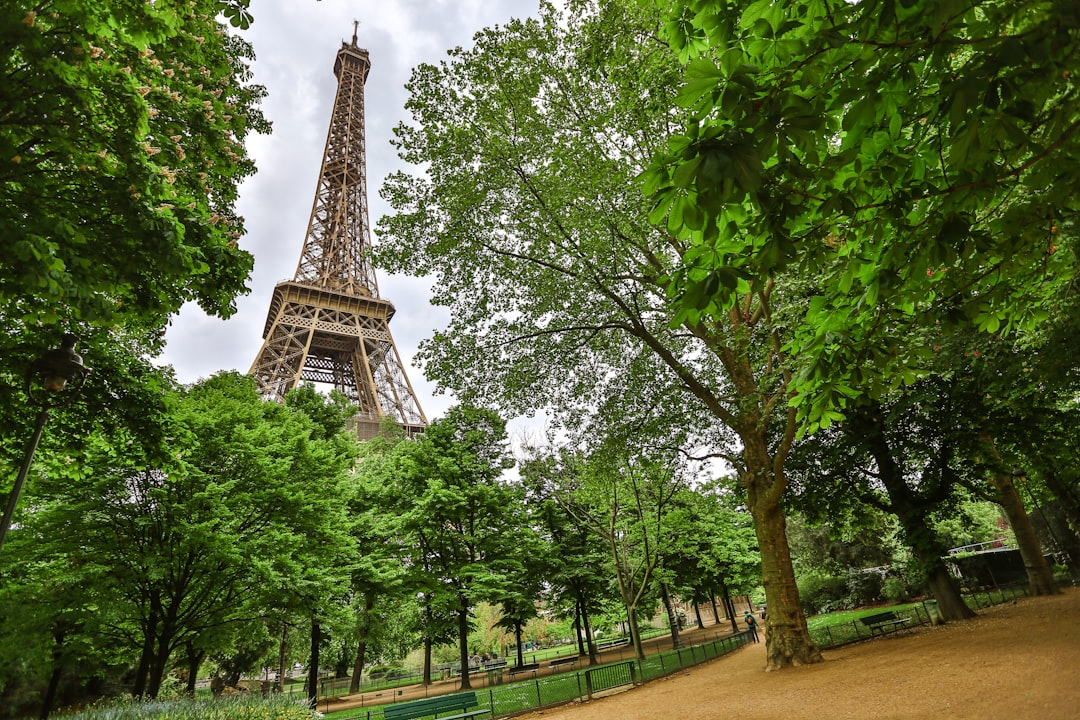Embark on a journey across the globe to explore the Greatest Man-Made Wonders that have captivated humanity for centuries. From ancient architectural marvels to modern engineering feats, these wonders showcase the pinnacle of human creativity, resilience, and cultural heritage. This comprehensive guide, inspired by the meticulous research and presentation by Touropia, unveils fifty extraordinary sites that define our shared legacy.
These wonders range from the timeless permanence of the Great Pyramid of Giza to the intricate artistry of the Basilica de la Sagrada Familia, and the monumental achievements of the Panama Canal. Each site tells a unique story of the civilisation that built it and the cultural significance it holds today.
Introduction to the Greatest Man-Made Wonders
The earliest known lists of wonders date back over two millennia, created by ancient Hellenic tourists who marveled at the feats of their time. Except for the Great Pyramid of Giza, those ancient wonders have largely been lost to history due to natural disasters and human actions. Since then, humanity has continued to build and preserve remarkable structures that inspire awe and admiration.
This article presents a curated list of the Greatest Man-Made Wonders of the world as of 2025, highlighting the brilliance of human ingenuity across different cultures and eras. From the vibrant mosaics of Central Asia to the towering modern skyscrapers, these wonders offer a window into our past and present achievements.
50 to 41: Historic and Cultural Landmarks
50. Registan Square, Uzbekistan
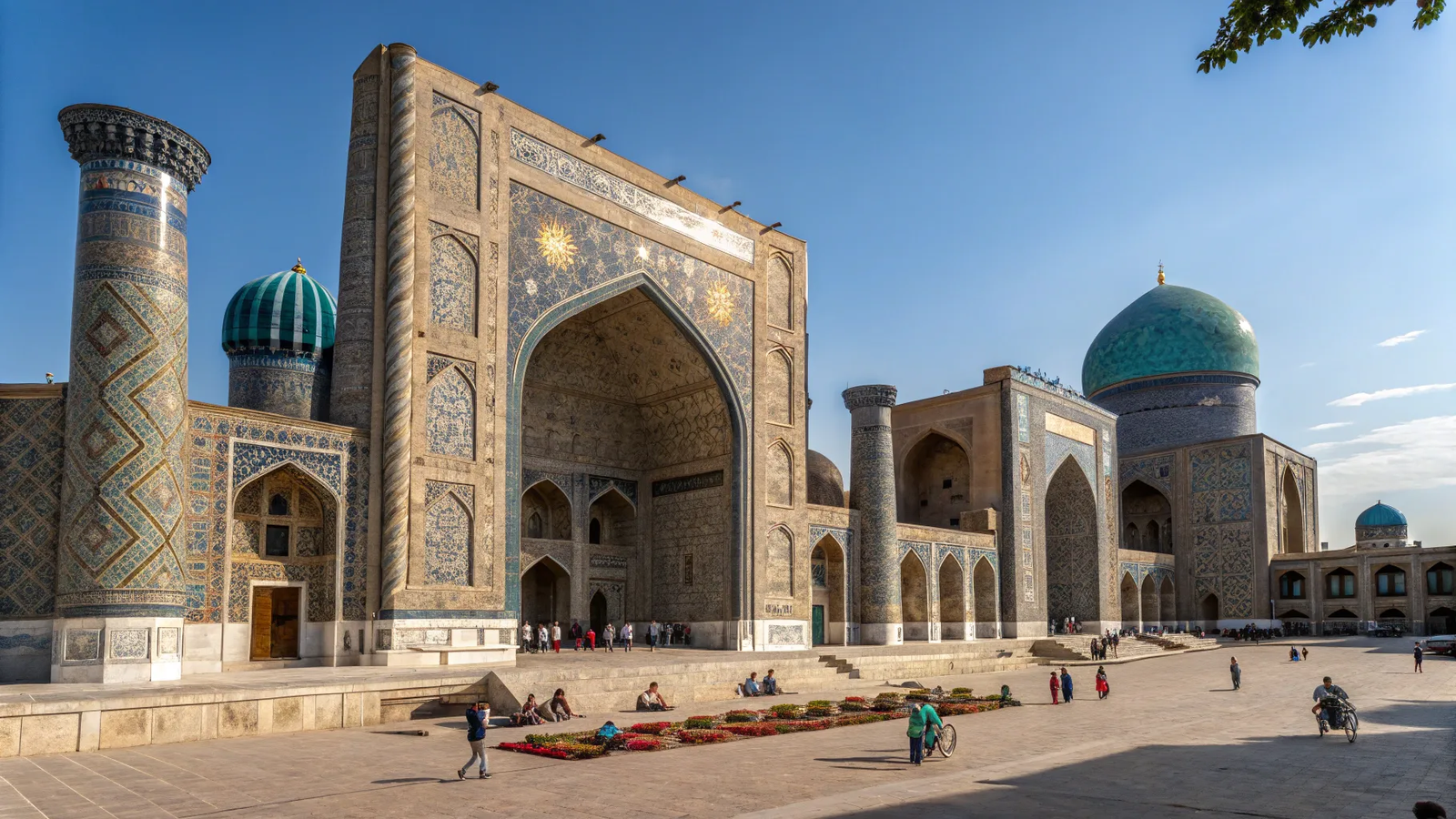
Registan Square stands as arguably the most awe-inspiring single site in Central Asia. Located in the heart of medieval Samarqand, this iconic square is flanked by three grand madrasas adorned with stunning mosaics, intricate tile work, and majestic domes. Despite frequent earthquakes that have shaped the region, these madrasas remain among the oldest preserved of their kind, a testament to the craftsmanship of their builders.
49. Basilica de la Sagrada Familia, Barcelona, Spain
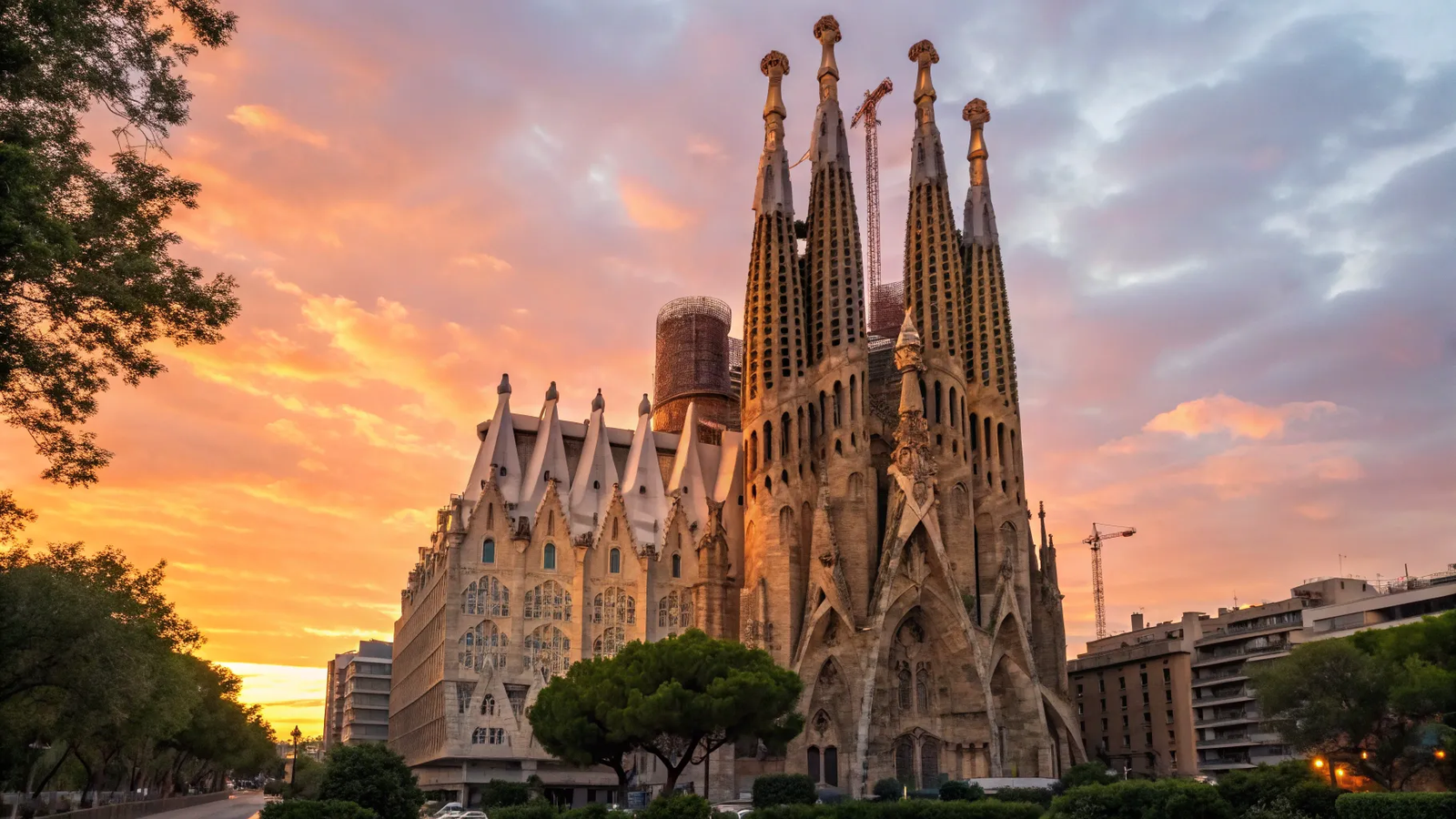
The Basilica de la Sagrada Familia is a famously opulent church and a masterpiece of Catalan architect Antoni Gaudí. Construction began in 1882 and continues to this day, with an anticipated completion in 2026. Combining Art Nouveau and Gothic styles, the church features eight completed spires, with ten more planned. Its twisting turrets, surreal curves, and intriguing gargoyles create an otherworldly aesthetic that attracts millions of visitors each year.
48. Potala Palace, Lhasa, Tibet

Perched atop a hill in the Lhasa Valley, the Potala Palace is an epic monument and one of Tibet’s most significant cultural symbols. Originally erected in 1649, it served as a winter residence for the Dalai Lamas. The colossal palace houses over 10,000 shrines and more than 200,000 statues, surrounded by towering mountains. Its striking red and white facade and rich religious history make it a must-see for those interested in Tibetan Buddhism.
47. Hoover Dam, USA
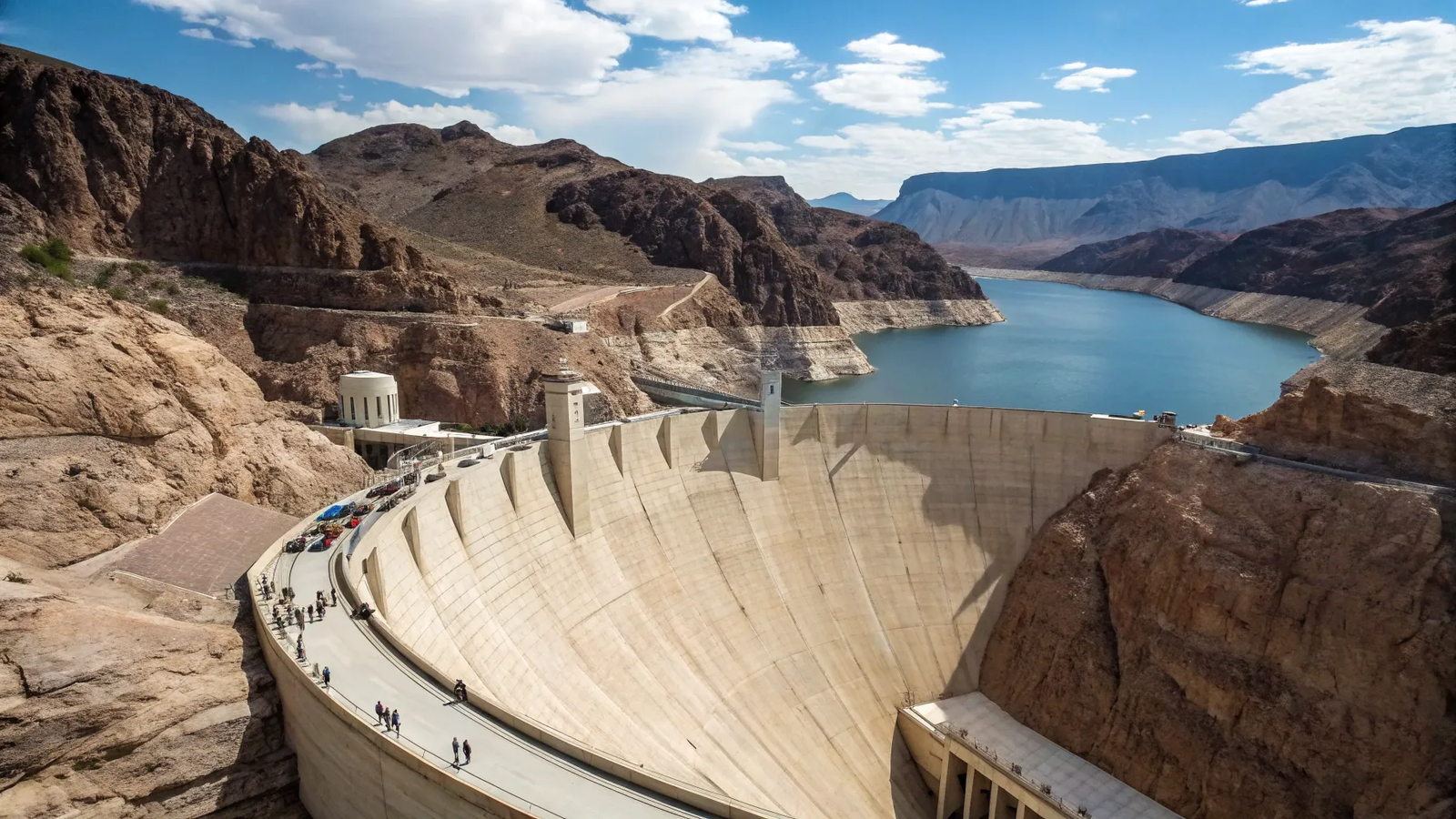
A marvel of modern engineering, the Hoover Dam blocks the Black Canyon of the Colorado River, holding back nearly a trillion gallons of water. Built during the Great Depression in the 1930s, the dam towers 726 feet high. It is recognized as a National Historic Landmark and has played a pivotal role in the development of Las Vegas and the broader American Southwest. Visitors can explore exhibits and take tours to learn about its architecture and impact.
46. Meteora, Greece

Meteora, meaning “elevated,” is a dramatic rock formation in northern Greece where monasteries cling precariously to cliffs. Dating back to the 15th century, these monasteries are accessible only by staircases cut into the stone or rickety wooden bridges. The Holy Trinity Monastery, perched 400 meters above a natural rock tower, offers breathtaking views and spiritual solace, continuing to welcome visitors to this day.
45. Hiroshima Peace Memorial, Japan
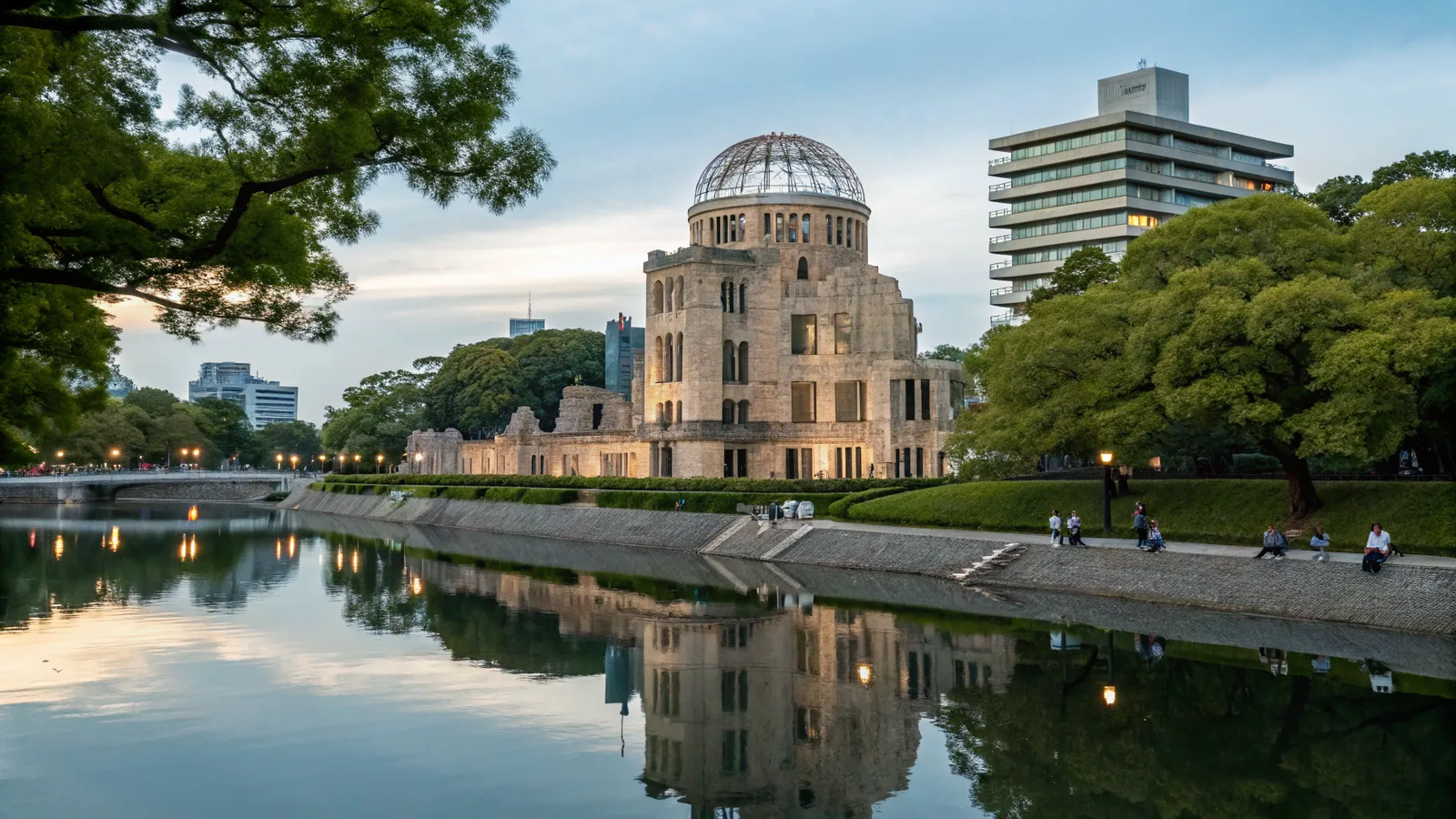
The Hiroshima Peace Memorial serves as a somber reminder of the devastation caused by the atomic bombing in 1945. The remains of the Genbaku Dome, one of the few structures to survive the blast, stand at the heart of the memorial. The surrounding Peace Park features monuments and sculptures dedicated to peace, making it a profoundly thought-provoking destination that promotes reconciliation and hope.
44. Dubrovnik Old Town, Croatia
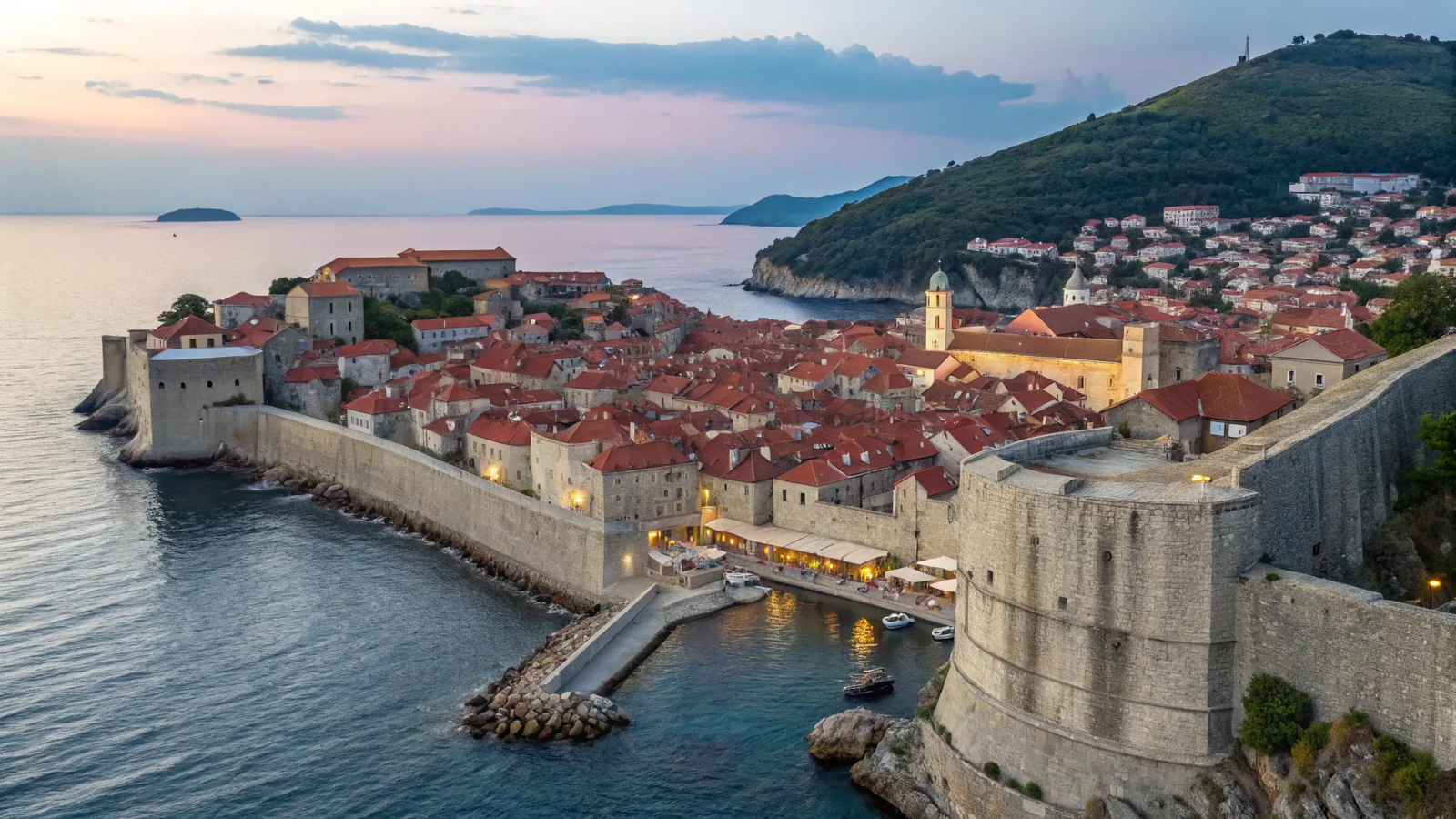
Dubrovnik’s Old Town is a beautifully preserved European marvel, famous for its red-tiled roofs and ancient city walls that stretch out to the Adriatic Sea. The cobblestone streets house numerous restaurants, bars, boutiques, and museums dating back to the 16th century. Pile Gate, with its Renaissance arches, marks the entrance to the old town, which is particularly enchanting when illuminated at night. The Dubrovnik cable car provides stunning aerial views of the historic streets.
43. Tikal, Guatemala
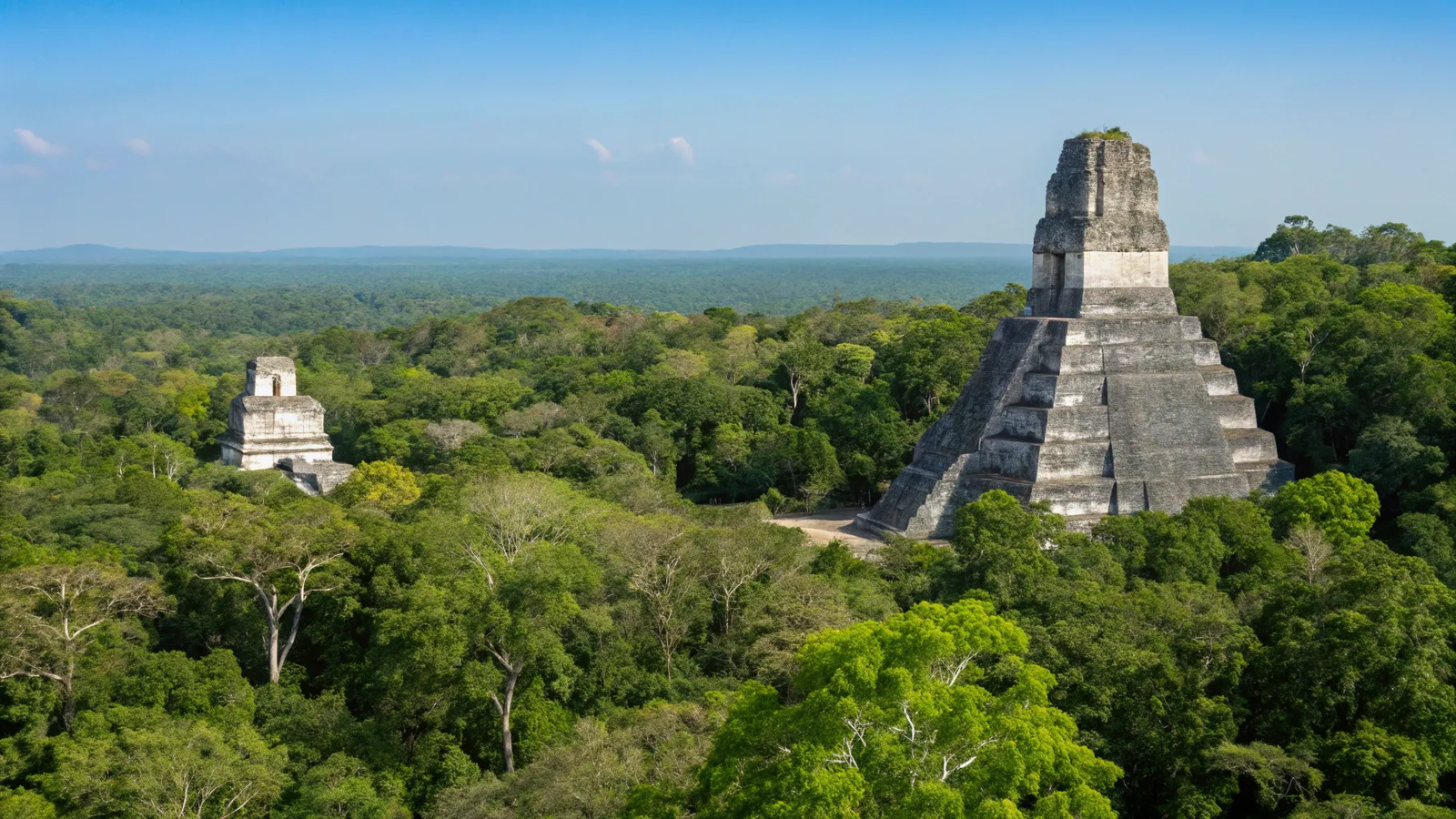
Hidden beneath the lush canopy of the Guatemalan jungle, the ruins of Tikal emerge with gray temple tops piercing the greenery. One of the largest archaeological sites in Mesoamerica, Tikal was the most powerful Mayan city around 600 AD. Visitors can explore pyramids, temples, and palaces, including the Temple of the Two-Headed Snake, one of the tallest pre-Columbian structures in the Western Hemisphere. Climbing to the top offers panoramic views of the rainforest.
42. CN Tower, Toronto, Canada
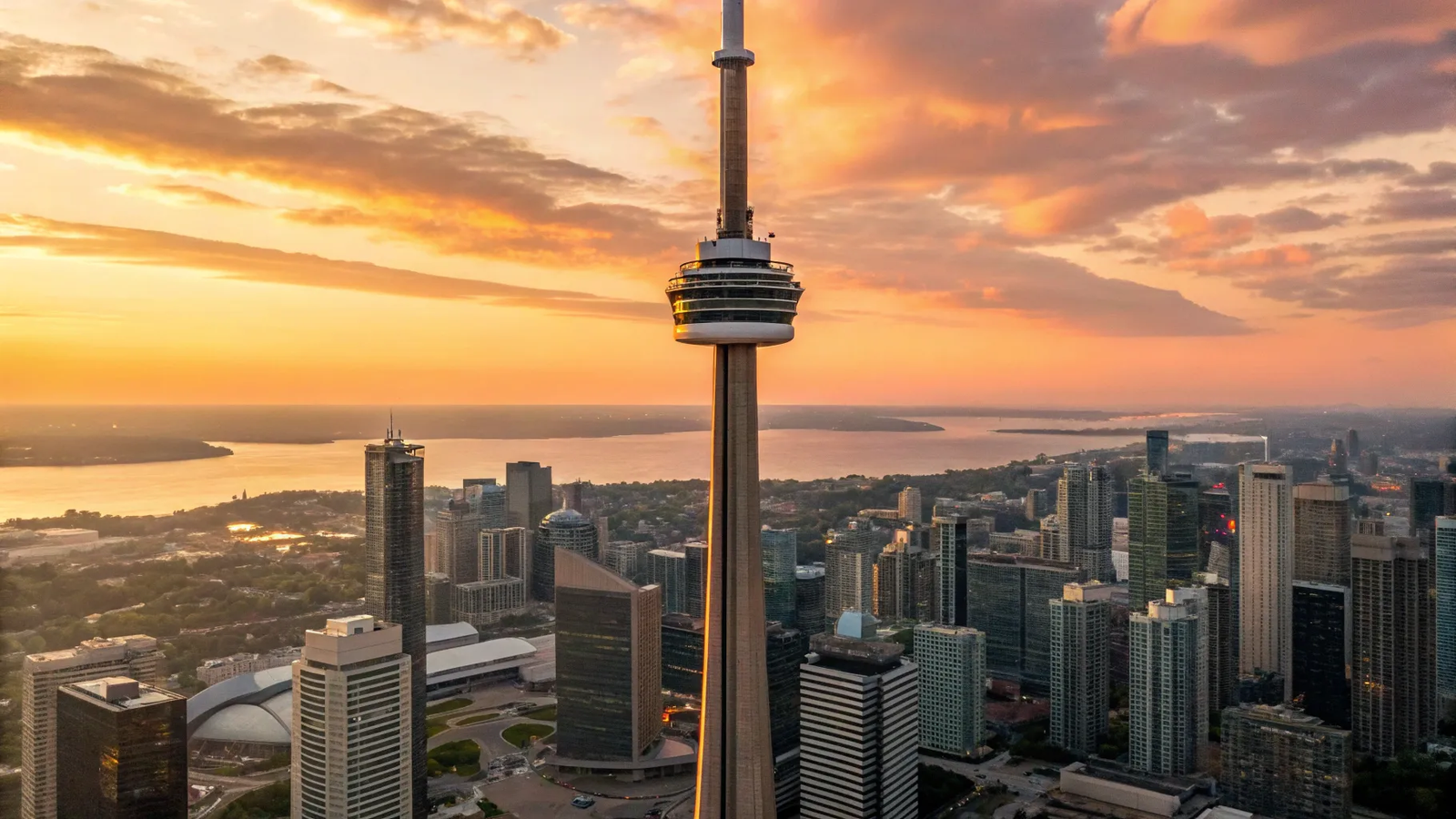
The CN Tower stands at the heart of downtown Toronto and is Canada’s most recognizable landmark. Completed in 1976, it was the tallest structure in the world for over 30 years. Visitors ascend via glass elevators to observation decks that offer stunning views of the city and, on clear nights, distant lights from Rochester, New York. The tower is a symbol of Canadian innovation and urban life.
41. Brandenburg Gate, Berlin, Germany
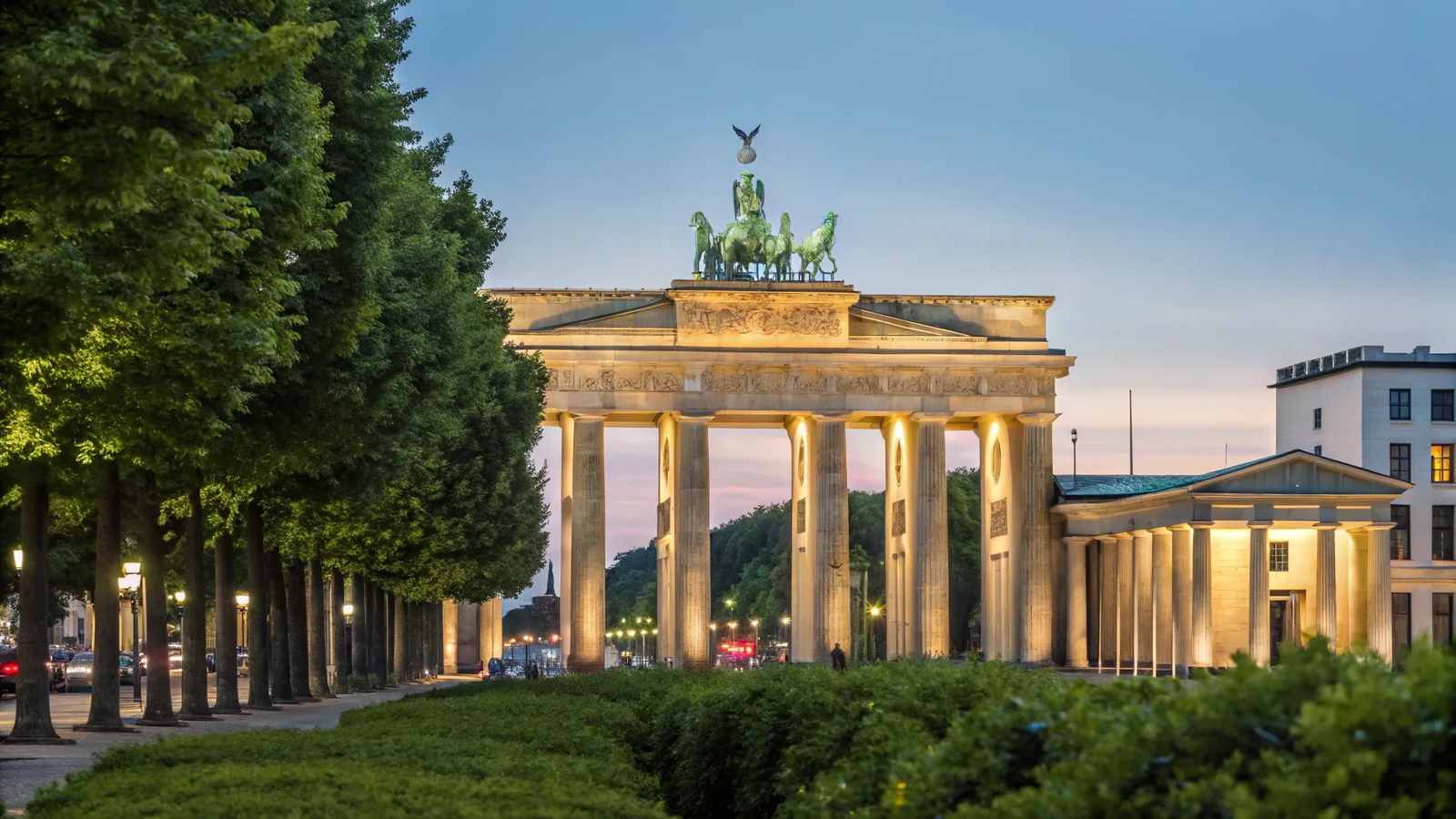
The Brandenburg Gate, built in the late 1700s, is the only surviving city gate of Berlin. Situated in the western part of the city, it marks the entrance to Unter den Linden. This iconic monument witnessed protests during Germany’s division and celebrations following the fall of the Berlin Wall in 1989. Fully restored, it symbolizes both the region’s turbulent history and the reunification of East and West Berlin.
40 to 31: Architectural and Religious Marvels
40. Sheikh Zayed Grand Mosque, Abu Dhabi, UAE
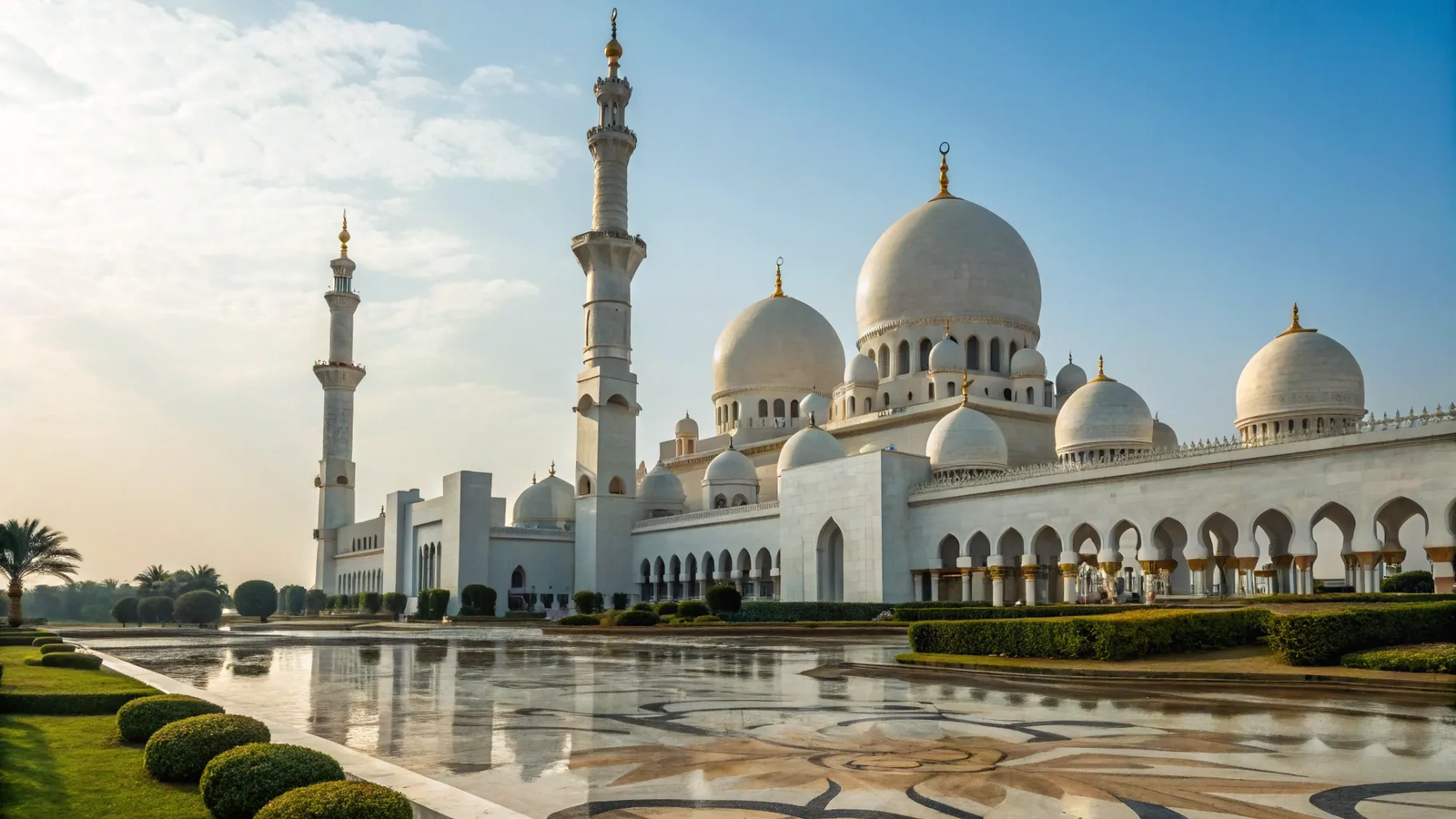
Rising majestically from manicured gardens, the Sheikh Zayed Grand Mosque is a stunning example of modern Islamic architecture. Constructed using over 90,000 tons of pure white marble from North Macedonia, it features more than 80 marble domes, 1,000 pillars, and four minarets. Open to visitors of all faiths, the mosque stands as a symbol of peace, tolerance, and cultural diversity.
39. Forbidden City, Beijing, China
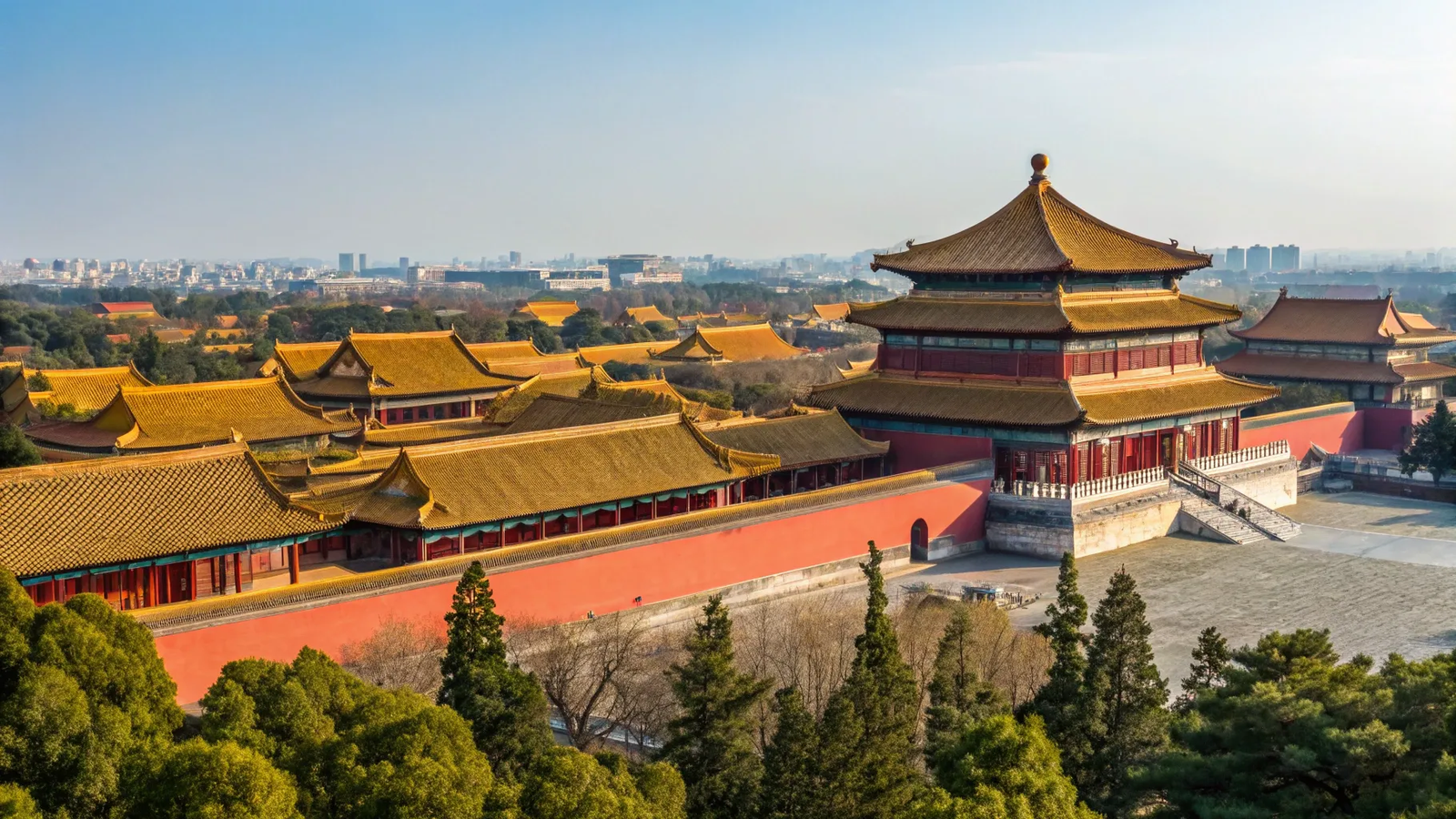
Since its construction in 1406, the Forbidden City has been the center of political power in China. Serving as the imperial home to Ming and Qing dynasty emperors, it covers an immense area with nearly 1,000 buildings. Notable structures include the Hall of Supreme Harmony and the Palace of Heavenly Purity. Surrounded by high walls and a moat, the complex is a breathtaking example of Chinese architecture and history.
38. Christ the Redeemer, Rio de Janeiro, Brazil

Perched atop the 2,330-foot Corcovado Peak, the statue of Christ the Redeemer is an iconic symbol of Brazil. Completed in 1931 during the Art Deco movement, this concrete and soapstone statue is the largest of its kind. Visitors reach the base by a cog train, with elevators and escalators now easing the climb. The statue’s outstretched arms overlook the city, offering a serene and majestic presence.
37. Petronas Twin Towers, Kuala Lumpur, Malaysia
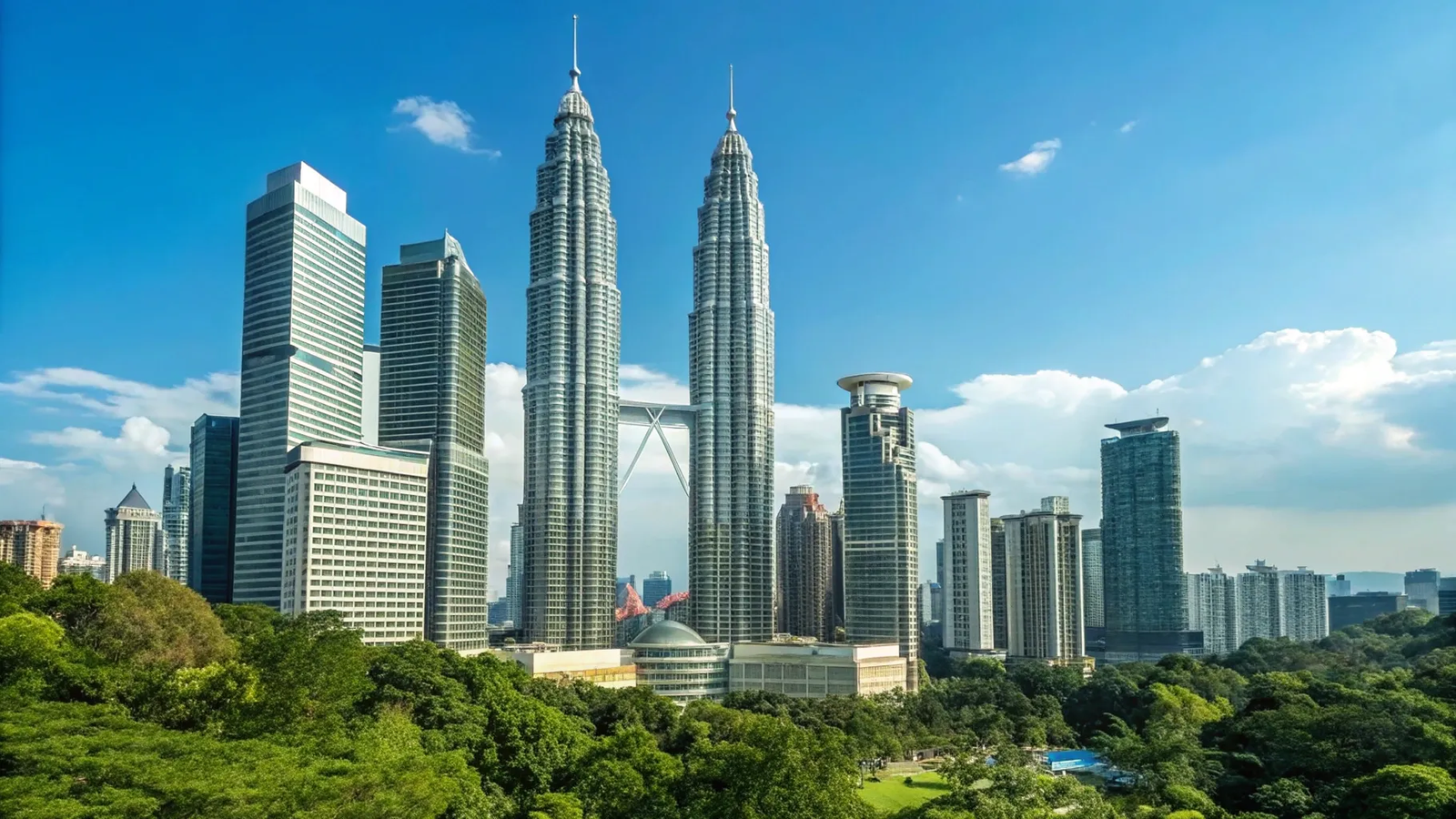
Once the tallest buildings in the world, the Petronas Twin Towers remain the tallest twin structures globally. Their 88 floors are constructed of reinforced concrete with a steel and glass facade inspired by Islamic art motifs, reflecting Malaysia’s Muslim heritage. The observation deck on the 86th floor offers views above the clouds, and visitors can walk the double-decked skybridge connecting the two towers.
36. Pont du Gard, France
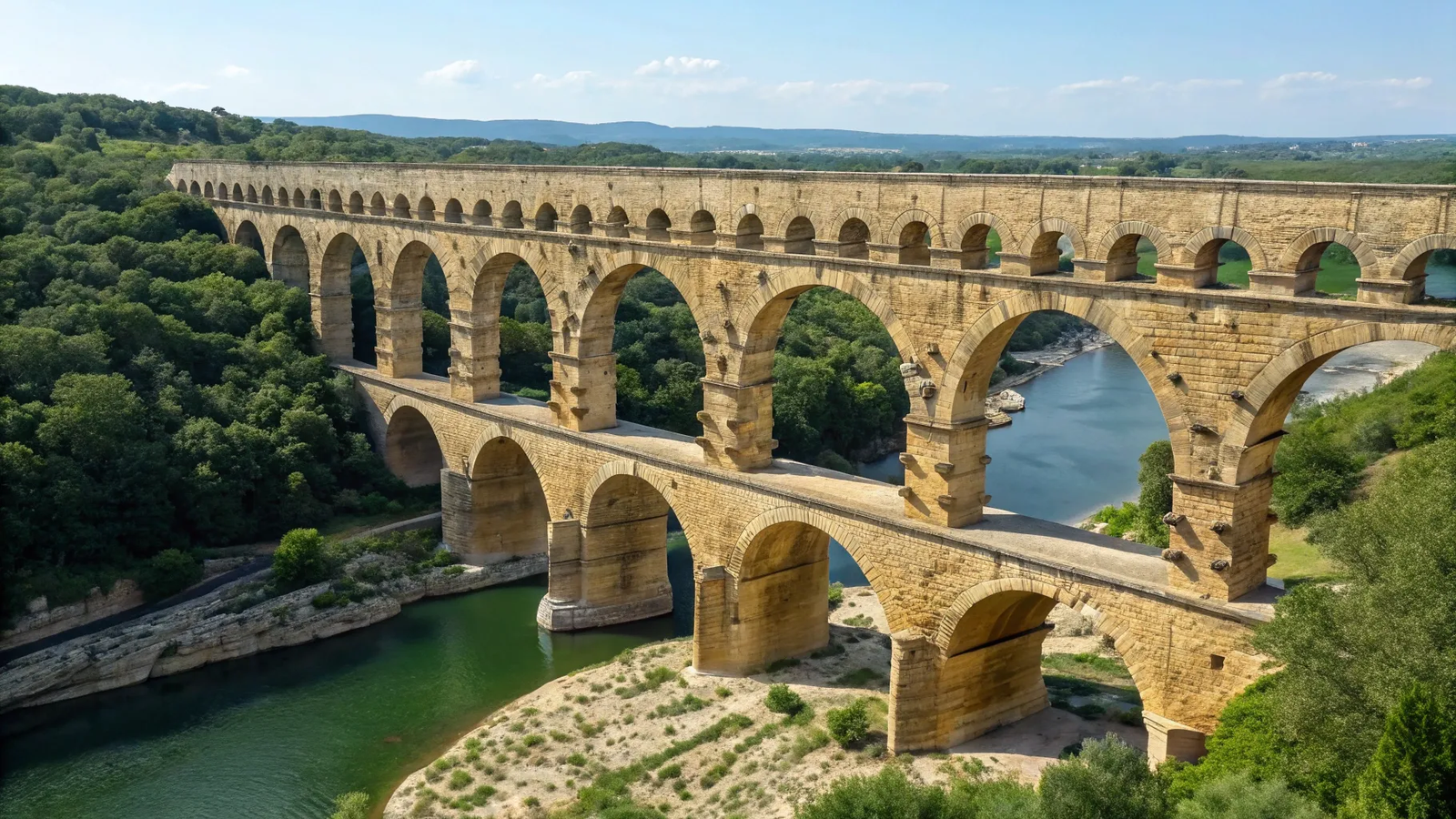
A masterpiece of Roman engineering, the Pont du Gard is a section of a 50 km long aqueduct built to carry water to Nîmes. Spanning the Gardon River, it is the highest Roman aqueduct bridge with three tiers of arches towering 50 meters high. Built in the 1st century AD, it remains remarkably well-preserved and is a popular tourist attraction surrounded by scenic landscapes.
35. Sigiriya, Sri Lanka
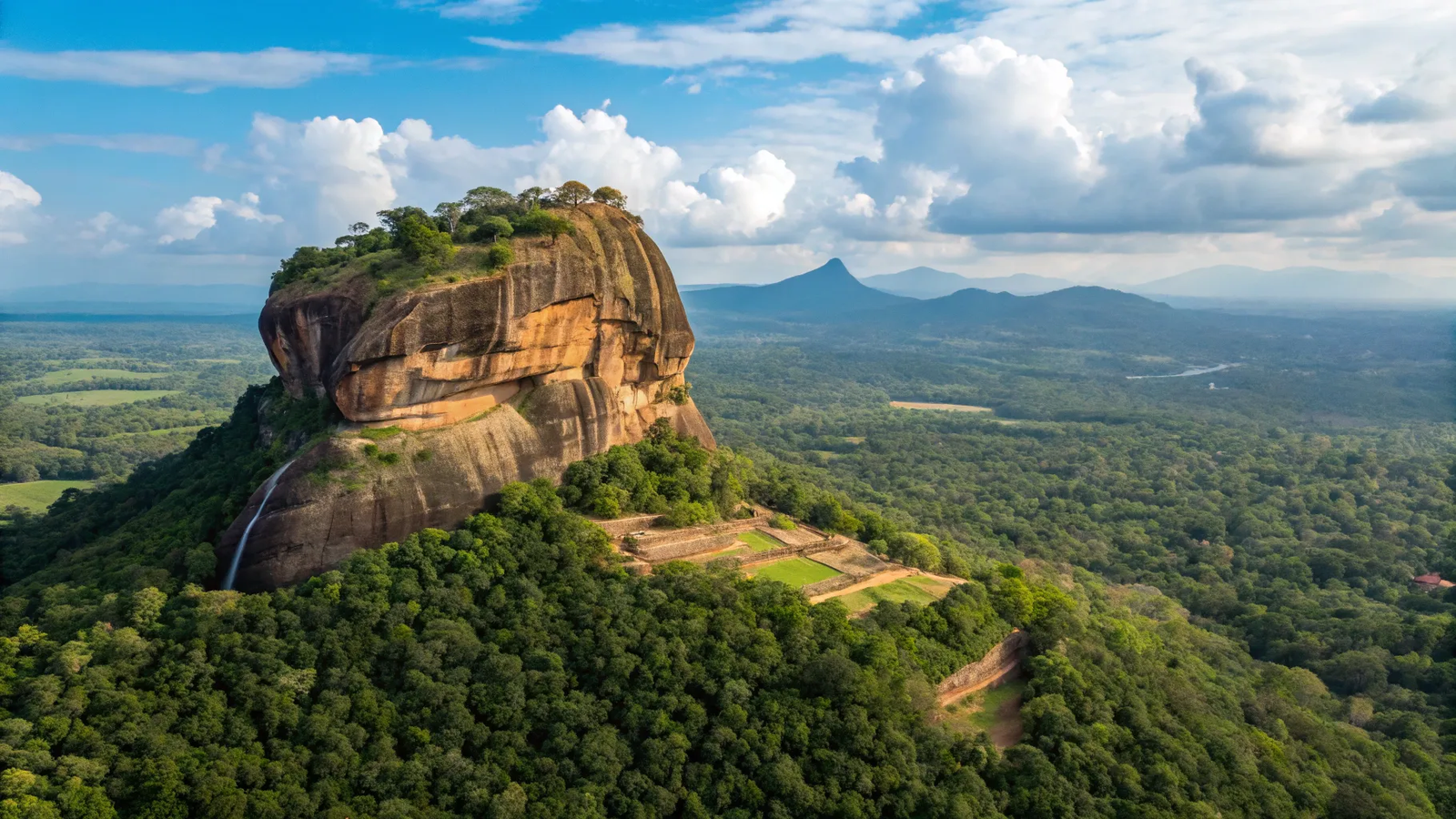
Known as Lion’s Rock, Sigiriya is an ancient rock fortress rising nearly 600 feet above the surrounding jungle. Originally a monastery in the 3rd century BC, it later became a royal residence. Visitors access the site through staircases and rooms carved from the lion’s mouth. The complex also features ponds, gardens, and fountains. Locals regard Sigiriya as the eighth wonder of the world.
34. Mount Rushmore, USA

Mount Rushmore is one of America’s most unique tourist attractions, featuring colossal sculptures of four revered presidents carved into the Black Hills of South Dakota. Created between 1927 and 1941, the 18-meter-high heads of George Washington, Thomas Jefferson, Theodore Roosevelt, and Abraham Lincoln symbolize the nation’s birth, growth, development, and preservation. The site includes a visitor center detailing its creation.
33. Tower Bridge, London, UK
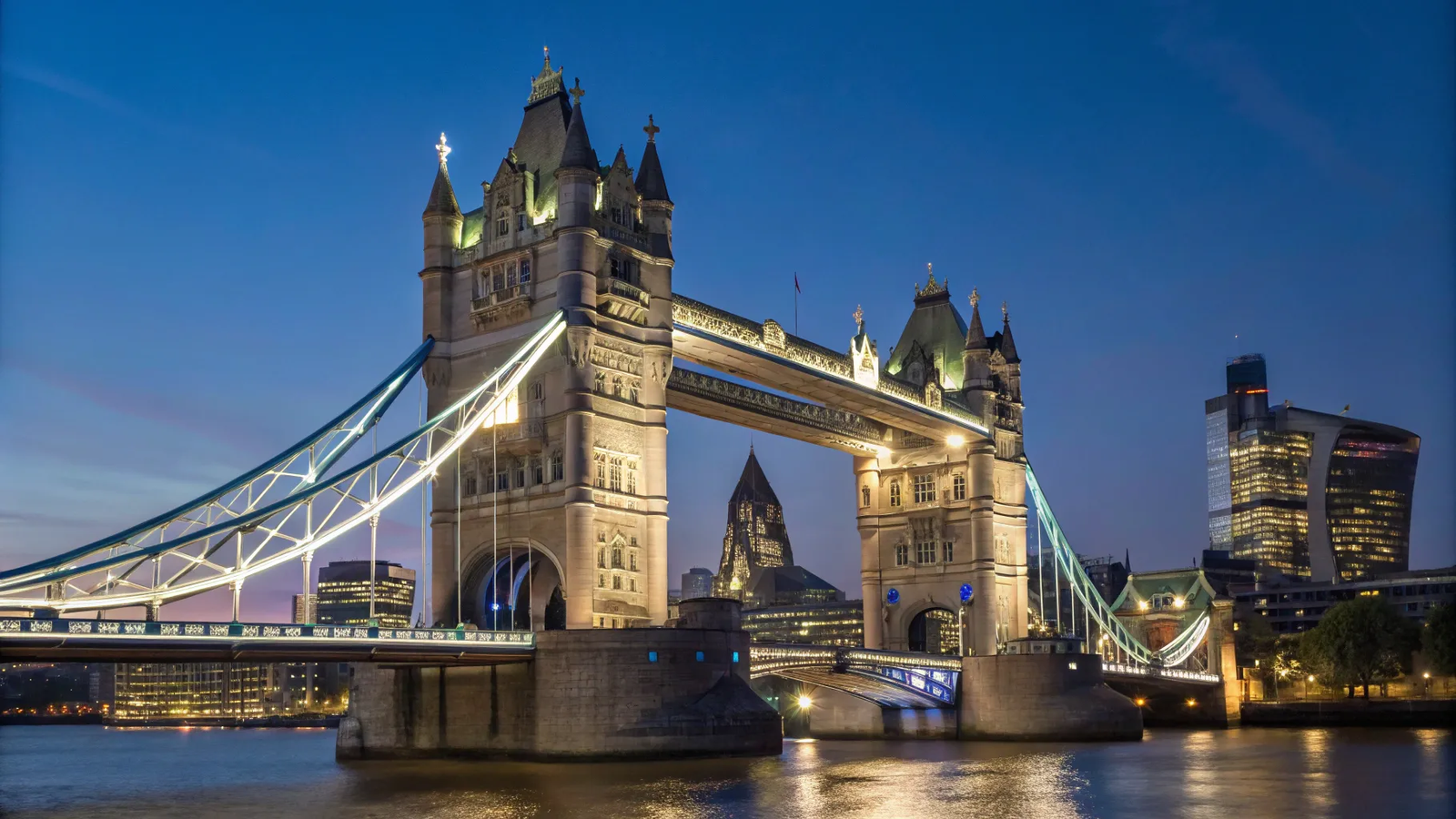
Often mistaken for London Bridge, Tower Bridge is a late Victorian masterpiece showcasing London’s architectural prowess. Opened in 1894, it spans the River Thames near the Tower of London. The bridge is a drawbridge powered by engines housed in its neo-Gothic towers. Still operational today, it has been modernized with dazzling lights that illuminate the structure at night.
32. Pyramids of Meroë, Sudan
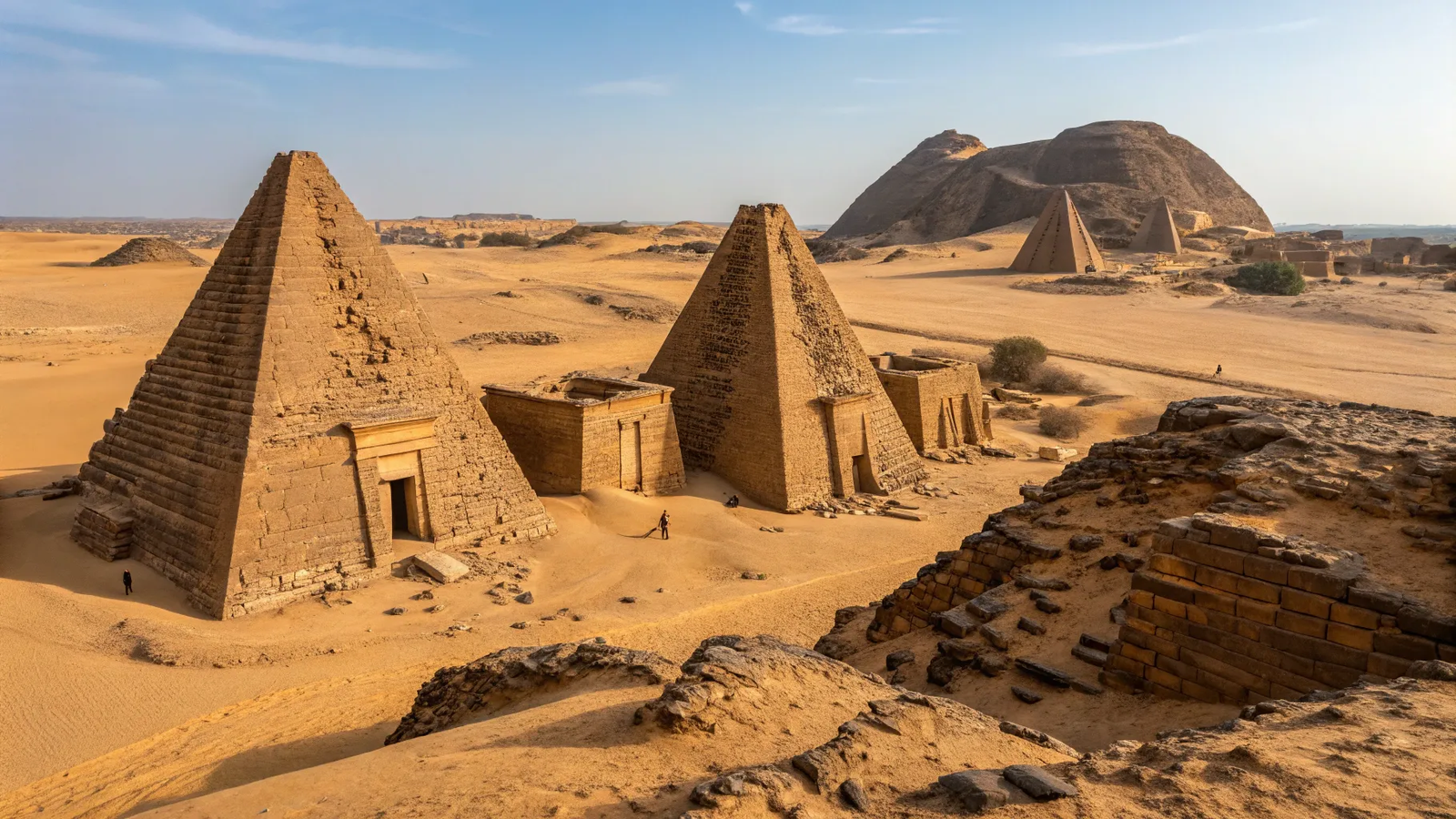
Located in the ancient Kushite Kingdom’s last capital, the pyramids of Meroë are over 200 in number, many still standing amidst the desert sands. These pyramids narrate the story of a powerful culture that thrived over 3,000 years ago in Nubia. While the Kushite script remains undeciphered, the pyramids’ inscriptions and Roman scrolls offer insights into this lesser-known civilization.
31. Santa Maria del Fiore, Florence, Italy
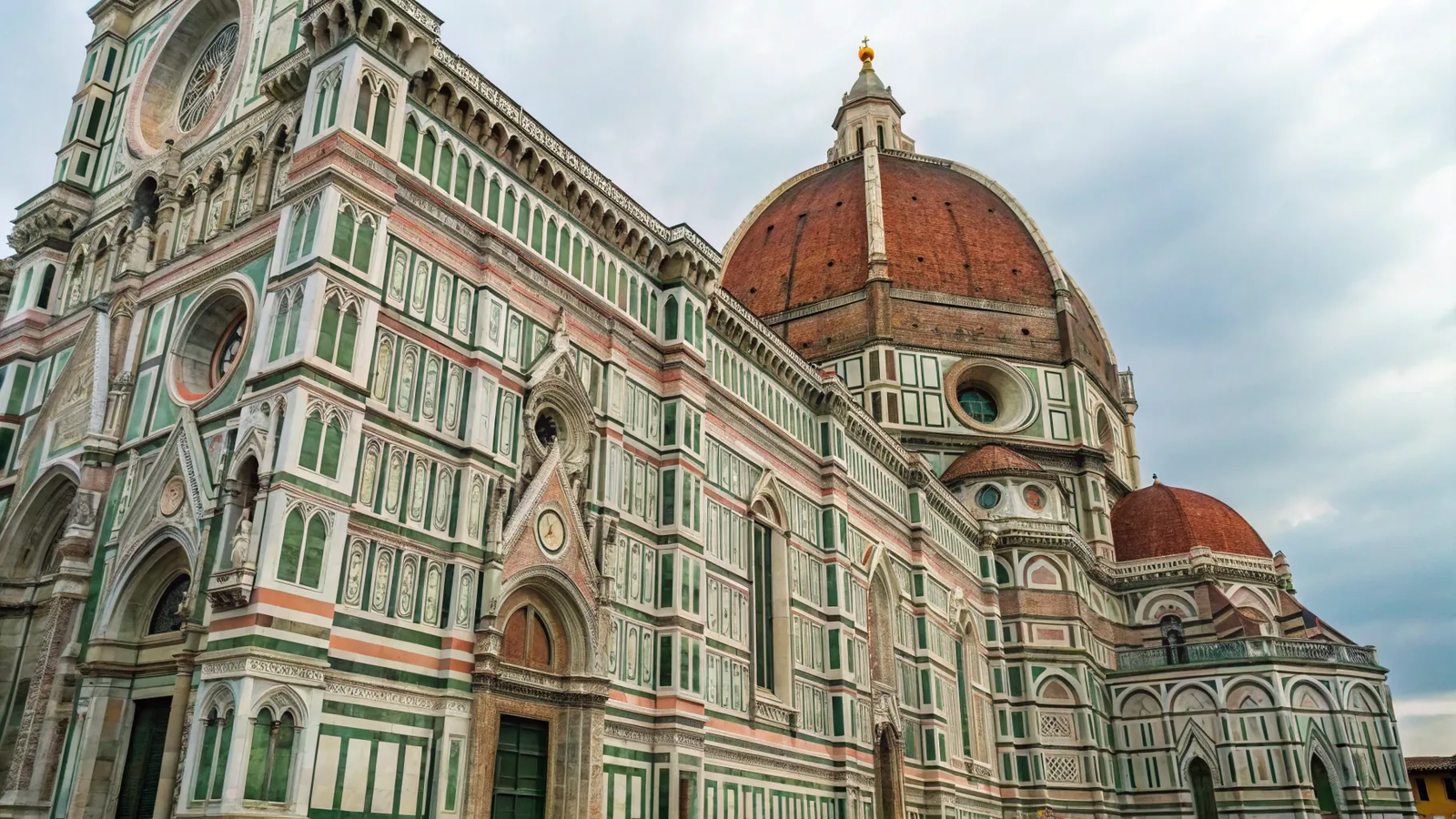
Santa Maria del Fiore Cathedral in Florence is renowned for its striking Gothic Revival facade made from green, pink, and white marble. Completed in 1436, it features three rose windows, bronze doors, and a colossal red-tiled dome visible across the city. While the interior is more austere, it houses beautiful artworks and tombs, contrasting with the cathedral’s extravagant exterior.
30 to 21: Ancient Armies, Sacred Sites, and Unique Cities
30. Terracotta Army, China
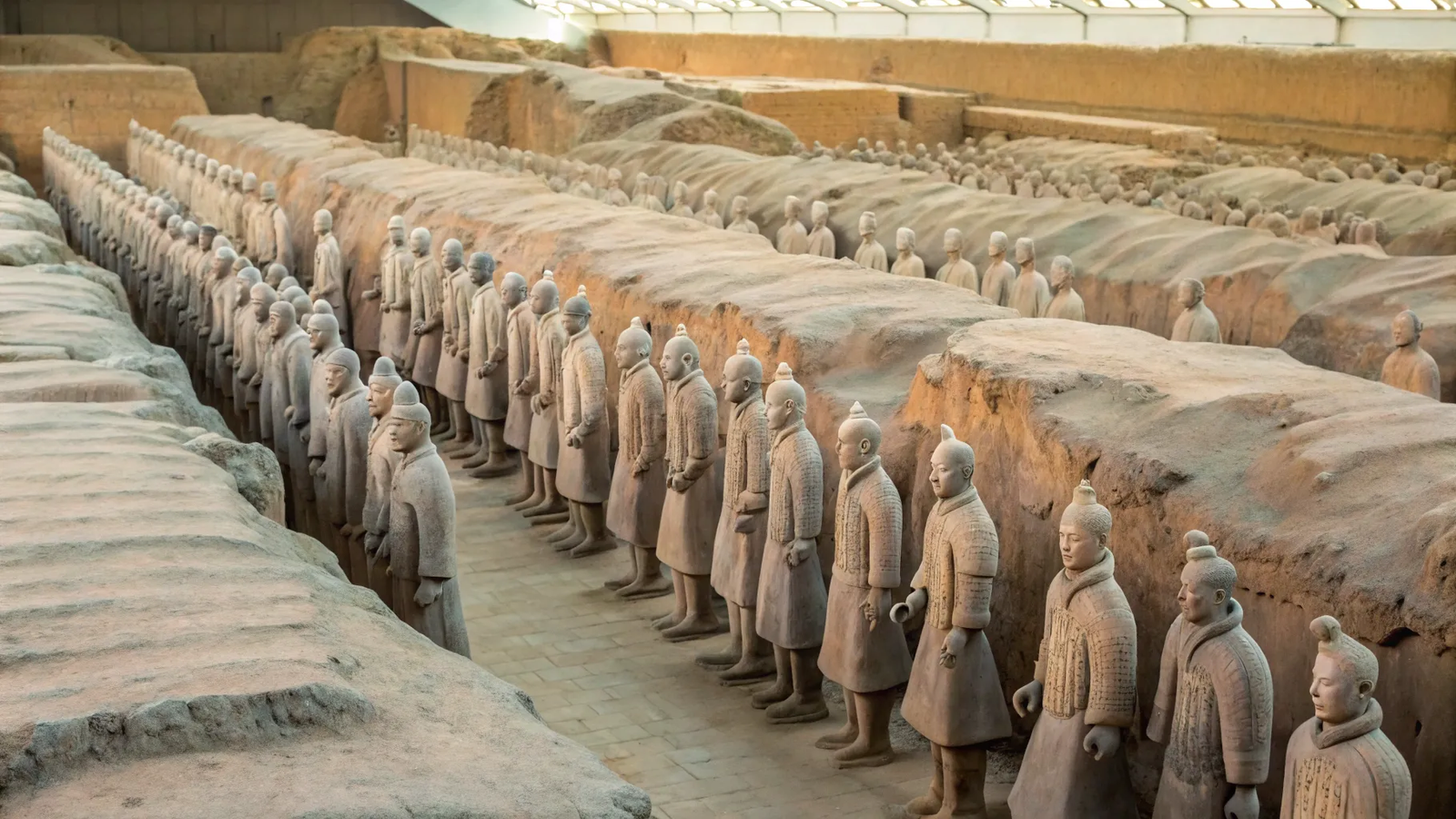
The Terracotta Army is an extraordinary collection of thousands of life-sized clay soldiers and horses buried near Xi’an, China. Dating back to the 3rd century BC, these figures were discovered accidentally in the 1970s. Each soldier’s face is unique, reflecting individual craftsmanship that took about 40 years to complete. The museum exhibits three excavated pits open to the public, revealing the scale and detail of this ancient army.
29. Wieliczka Salt Mine, Poland
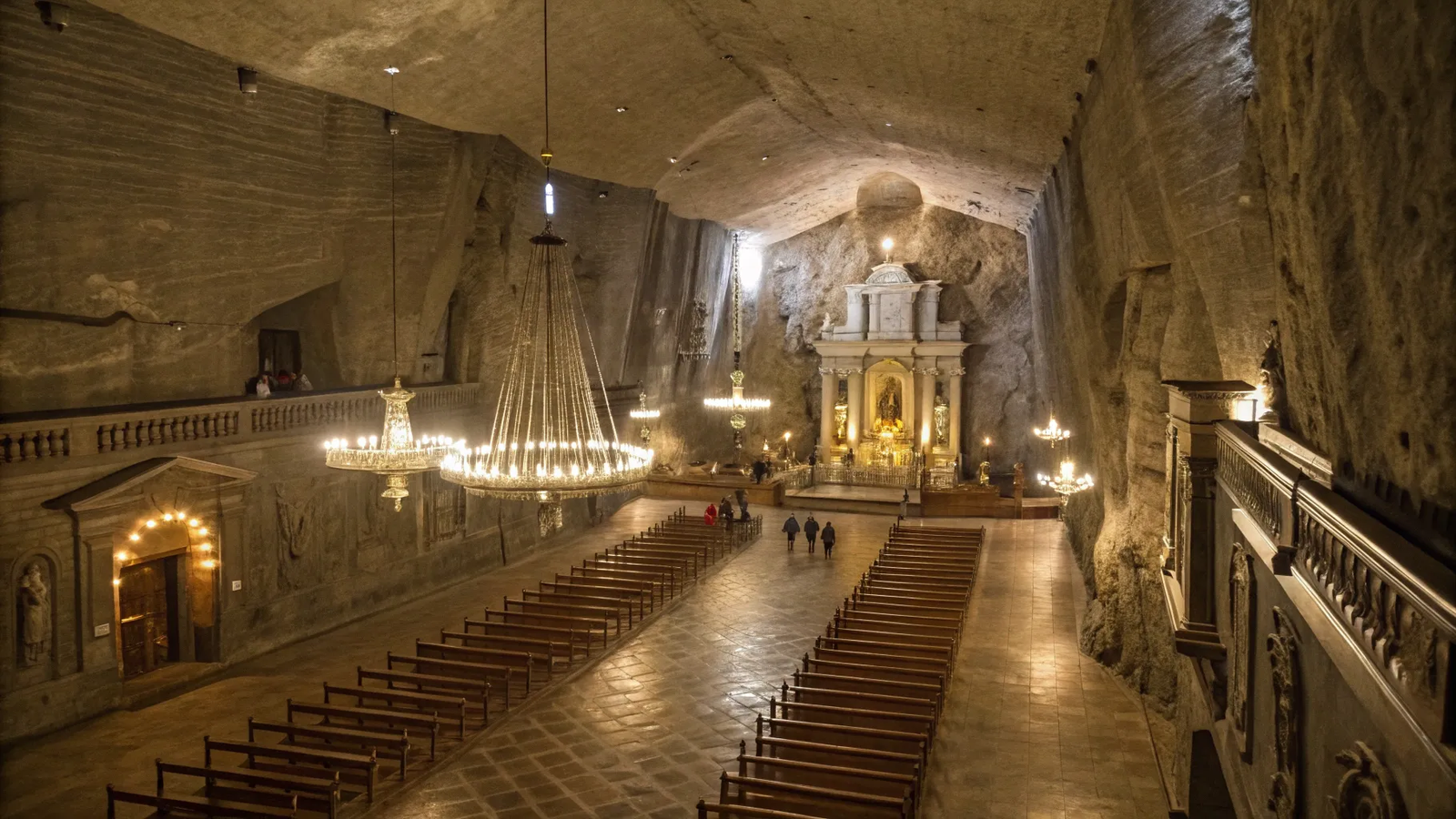
Located near Kraków, the Wieliczka Salt Mine operated from the 13th century until 2007, making it one of the oldest and longest-running salt mines in the world. The mine features an underground city carved entirely from rock salt, including a chapel with reputedly the best acoustics in Europe. It contains numerous ancient salt sculptures alongside contemporary artworks, making it a unique cultural and historical attraction.
28. Lalibela Churches, Ethiopia
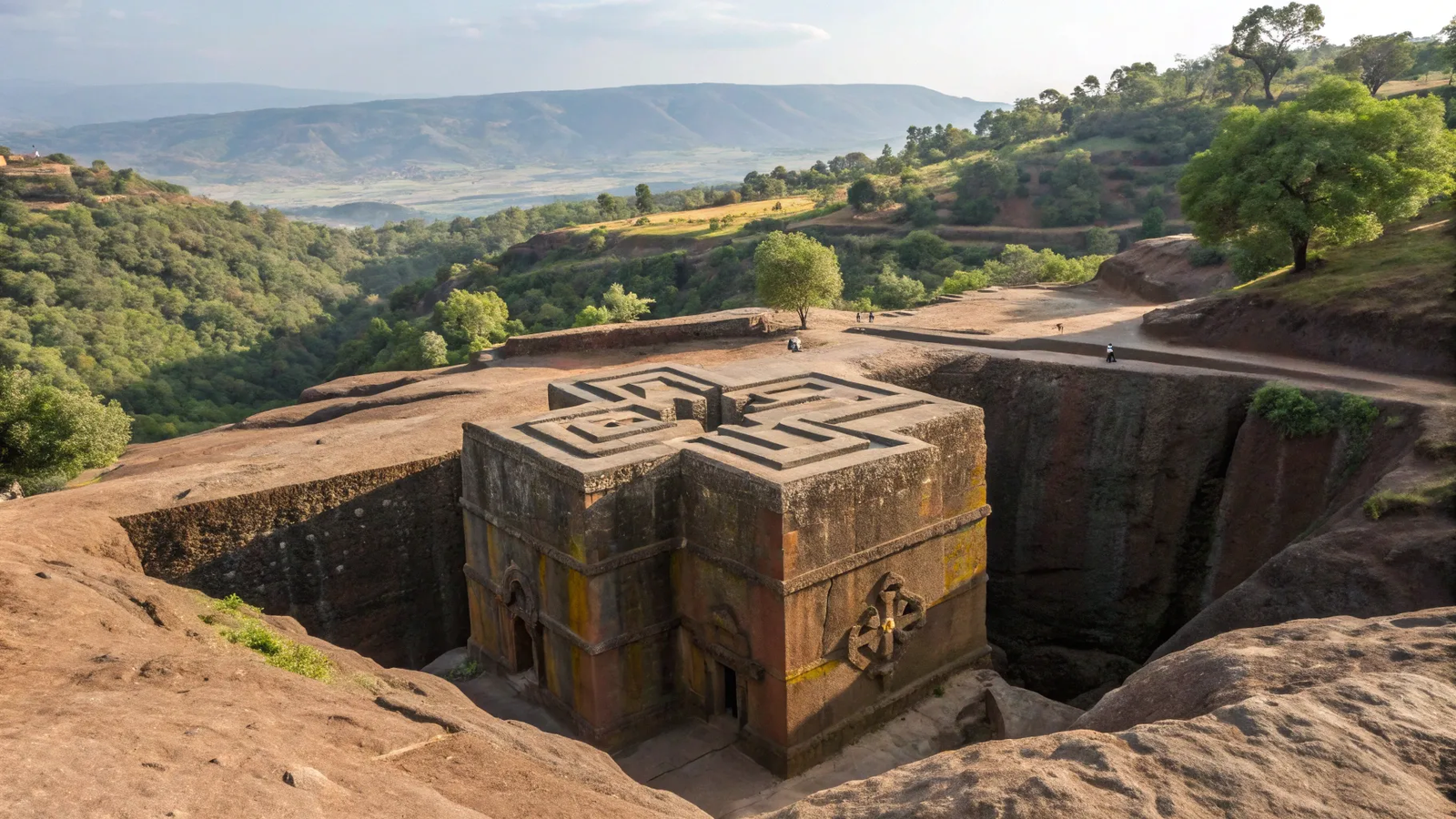
The city of Lalibela in the Ethiopian Highlands is home to 11 remarkable monolithic churches carved from living rock between the 7th and 13th centuries. Connected by intricate tunnels and passages, these churches were intended to represent the New Jerusalem. The Church of St. George is the most famous, carved in the shape of a Greek cross and standing 40 feet tall, adorned with stunning interior artworks.
27. Gardens by the Bay, Singapore
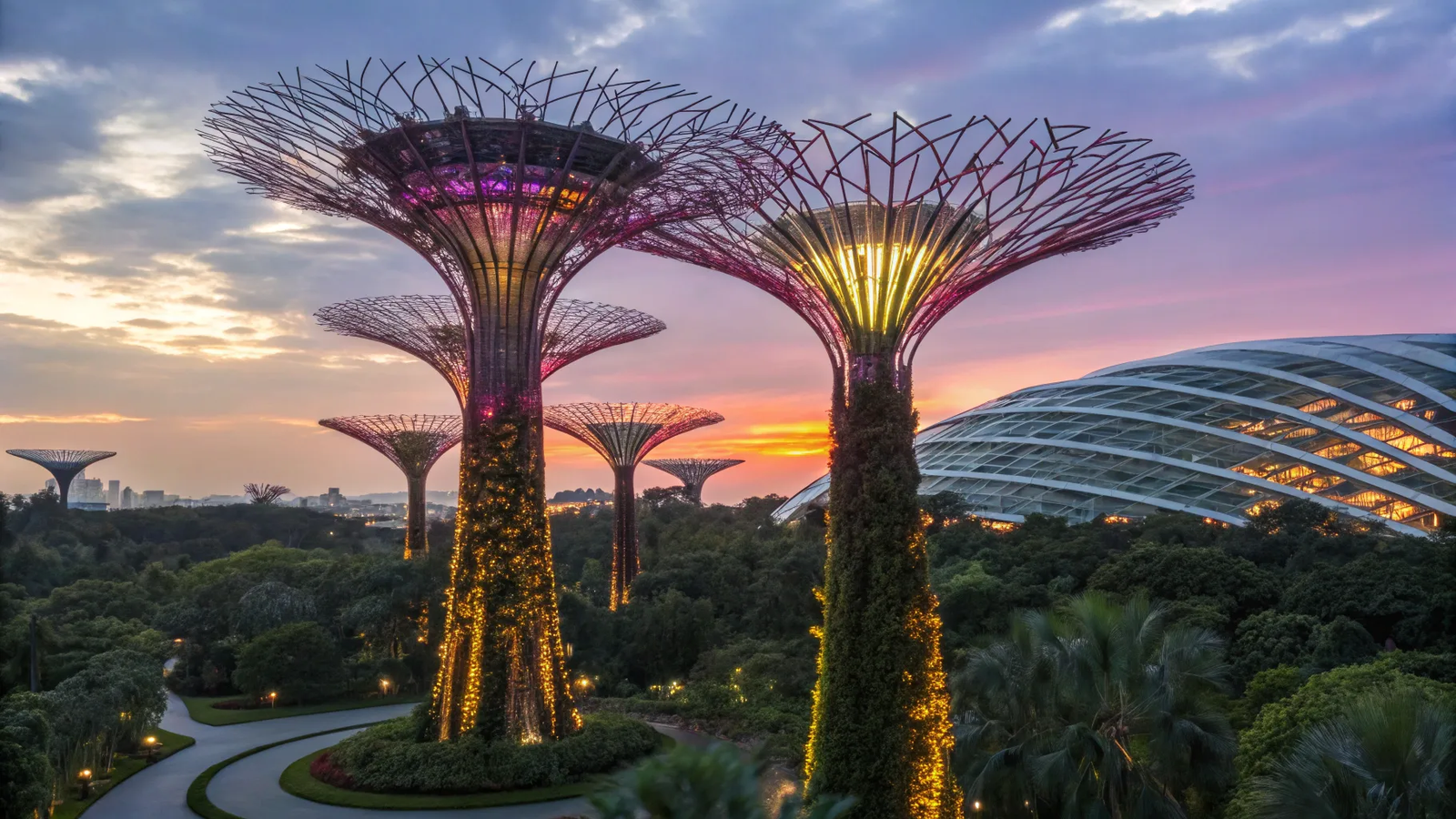
Singapore’s Gardens by the Bay is a 101-hectare futuristic botanical garden featuring space-age biodomes, towering “super trees,” and whimsical sculptures. Built on reclaimed land, the garden includes the Flower Dome—the largest glass greenhouse in the world—and the Cloud Forest, which recreates a misty tropical mountain environment complete with a 115-foot indoor waterfall. The super trees light up spectacularly at night.
26. Taj Mahal, India
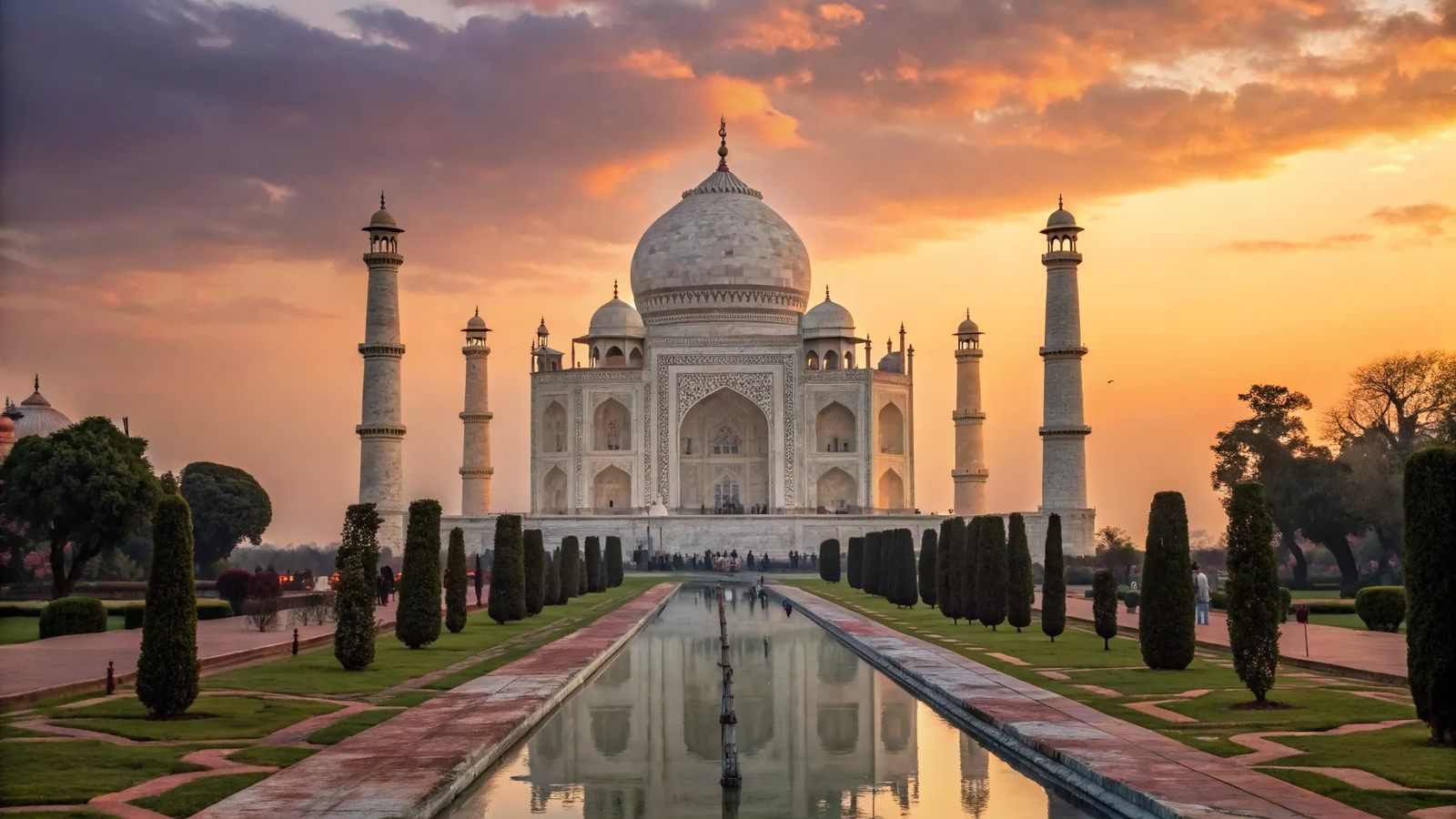
The Taj Mahal in northern India is a stunning white marble mausoleum built by Mughal Emperor Shah Jahan in memory of his beloved wife. Known as a “teardrop on the cheek of eternity,” this masterpiece of Mughal architecture includes the main mausoleum, reflecting pools, ornamental gardens, and several other buildings. It is one of the most well-preserved tombs globally and a UNESCO World Heritage Site.
25. Teotihuacan, Mexico
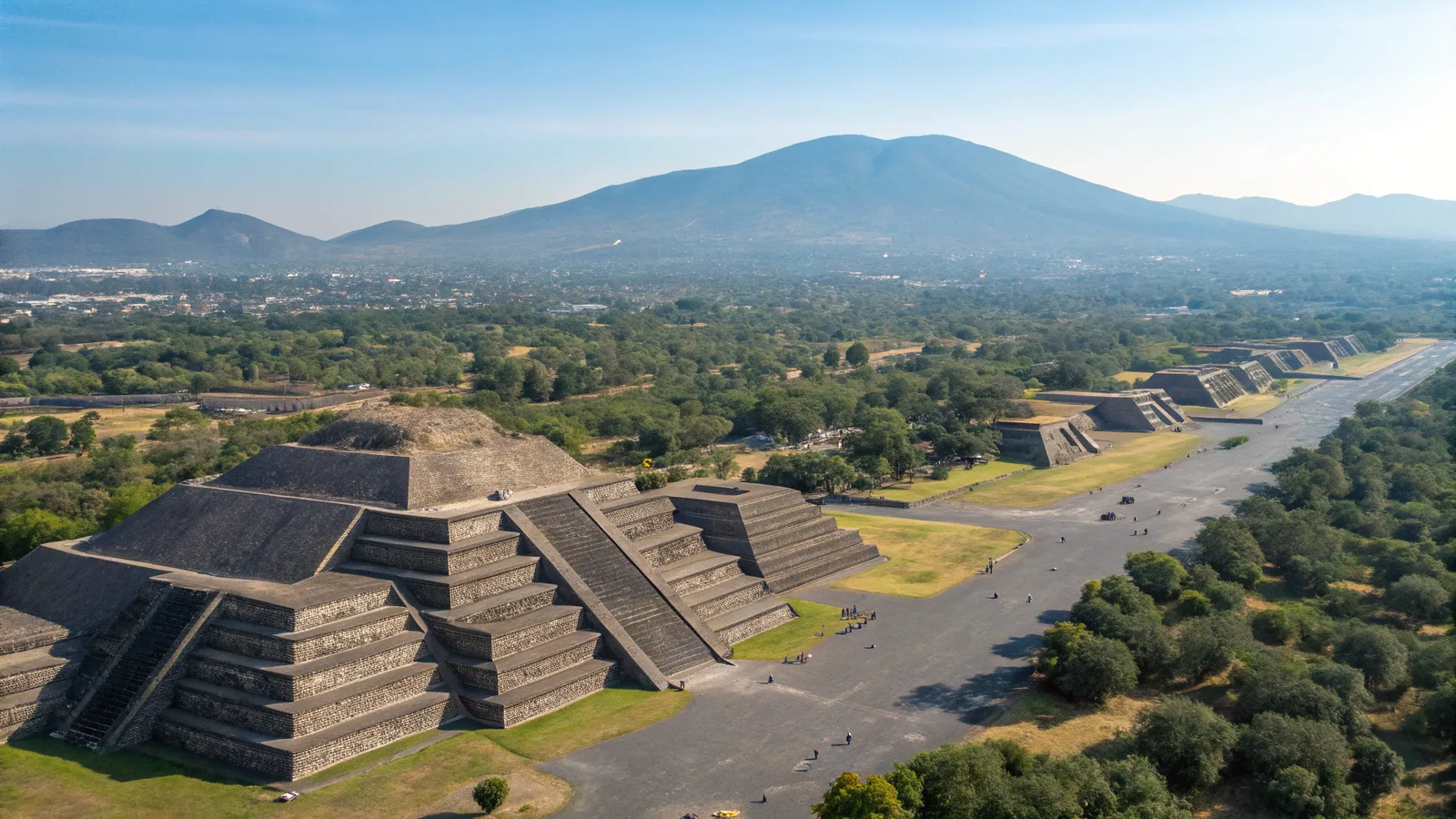
Located near Mexico City, Teotihuacan is an ancient metropolis and archaeological site featuring massive pyramids that tell the story of a 2,000-year-old culture predating the Aztecs. The city was once the largest in the world, and its pyramids remain as enduring symbols of its religious and cultural significance. The Aztecs considered it the birthplace of the gods and undertook pilgrimages to this sacred site.
24. Sydney Opera House, Australia
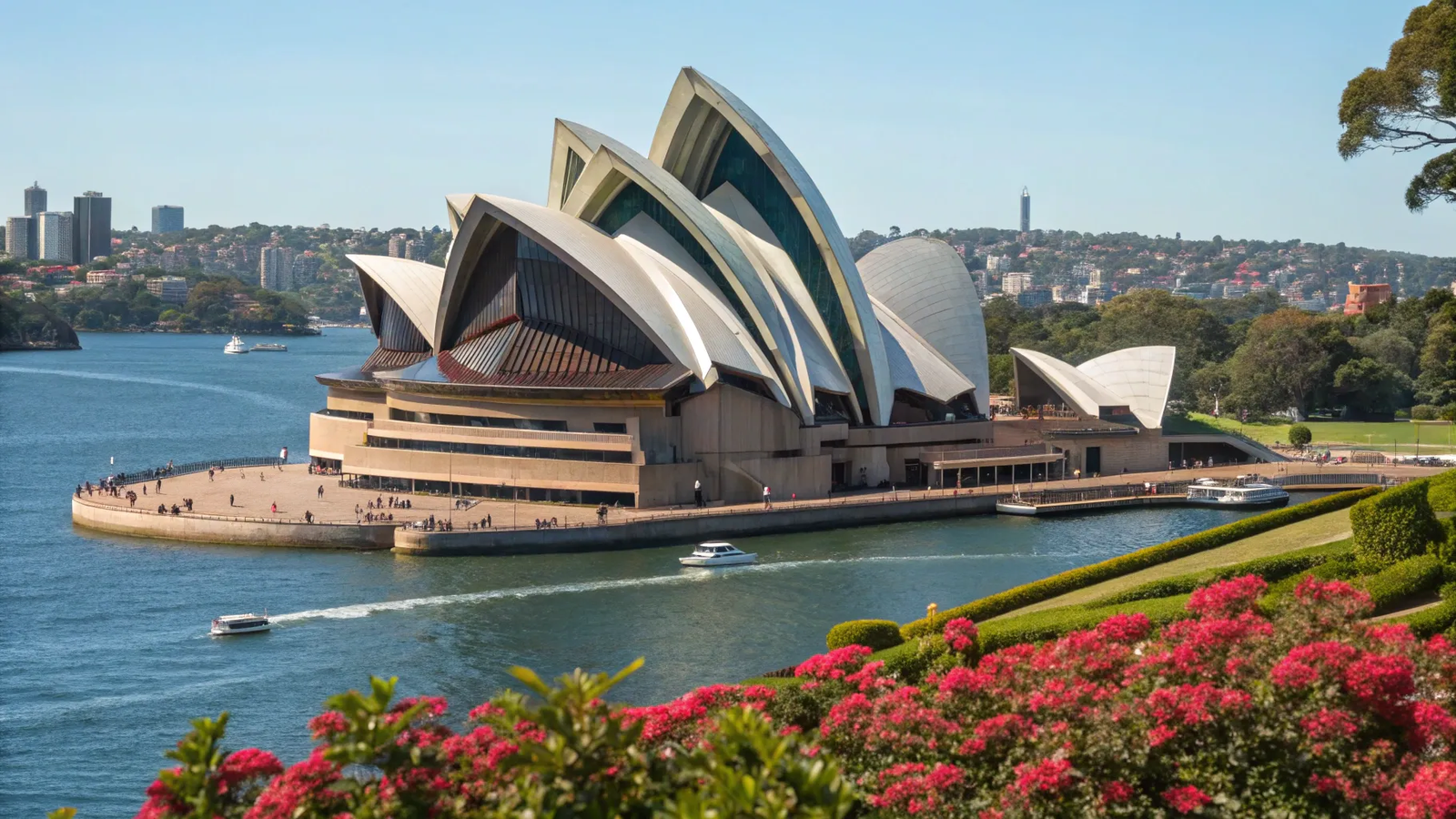
Regarded as a 20th-century architectural masterpiece, the Sydney Opera House was designed to resemble a massive sailing ship. It contains multiple performance venues hosting over 1,500 events annually. Set against the stunning backdrop of Sydney Harbour and the Royal Botanical Gardens, the opera house is among Australia’s most iconic landmarks and a symbol of modern architectural innovation.
23. Tiger’s Nest Monastery, Bhutan
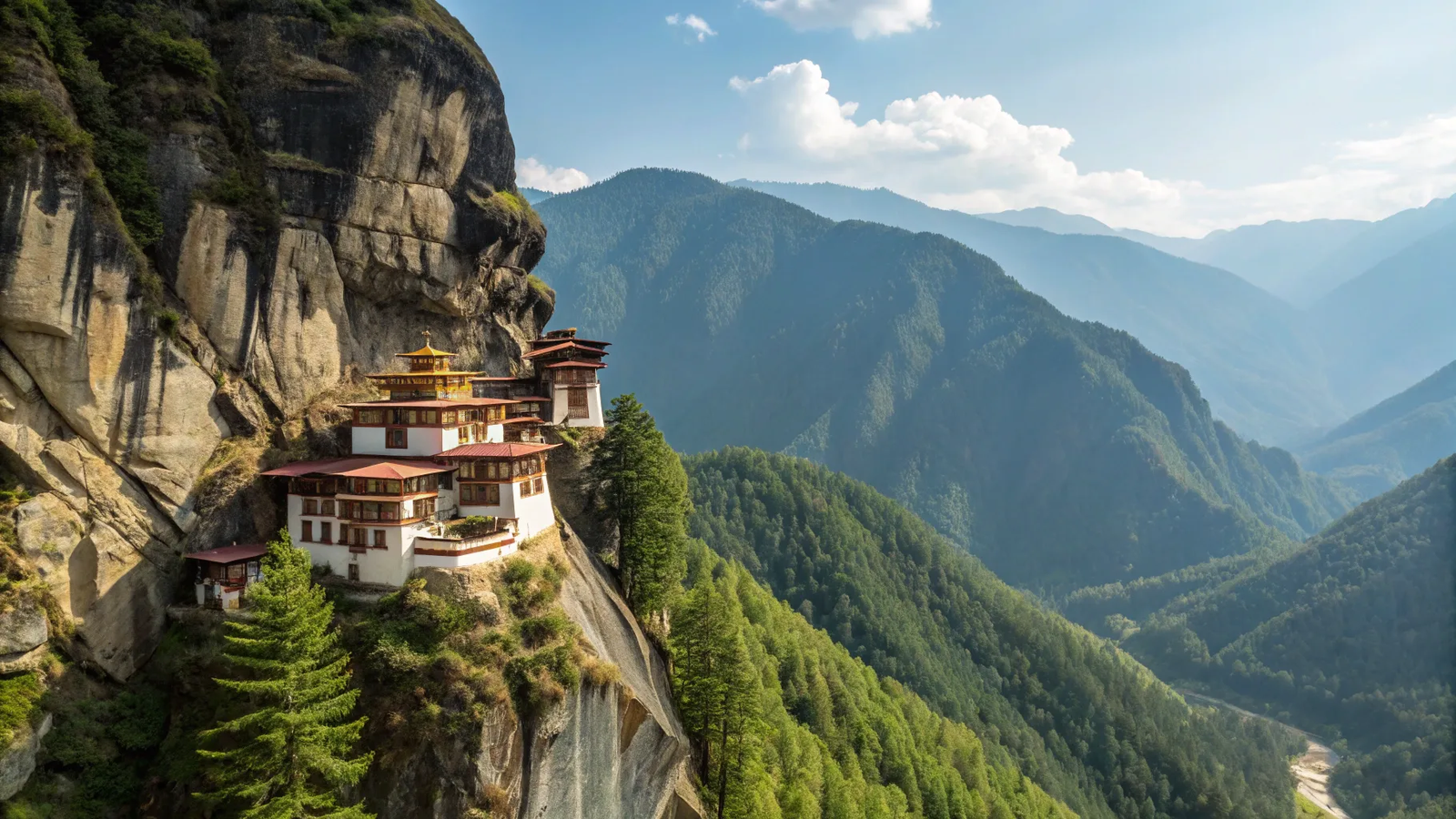
Perched 900 meters above the Paro Valley floor, Tiger’s Nest is Bhutan’s most sacred and spectacular site. Founded in 1692 around a cave where a revered Buddhist master meditated, the complex comprises four main temples. Access involves climbing stone steps and navigating rickety wooden bridges. The monastery offers breathtaking views and deep insight into Bhutan’s rich Buddhist culture.
22. Mezquita of Córdoba, Spain
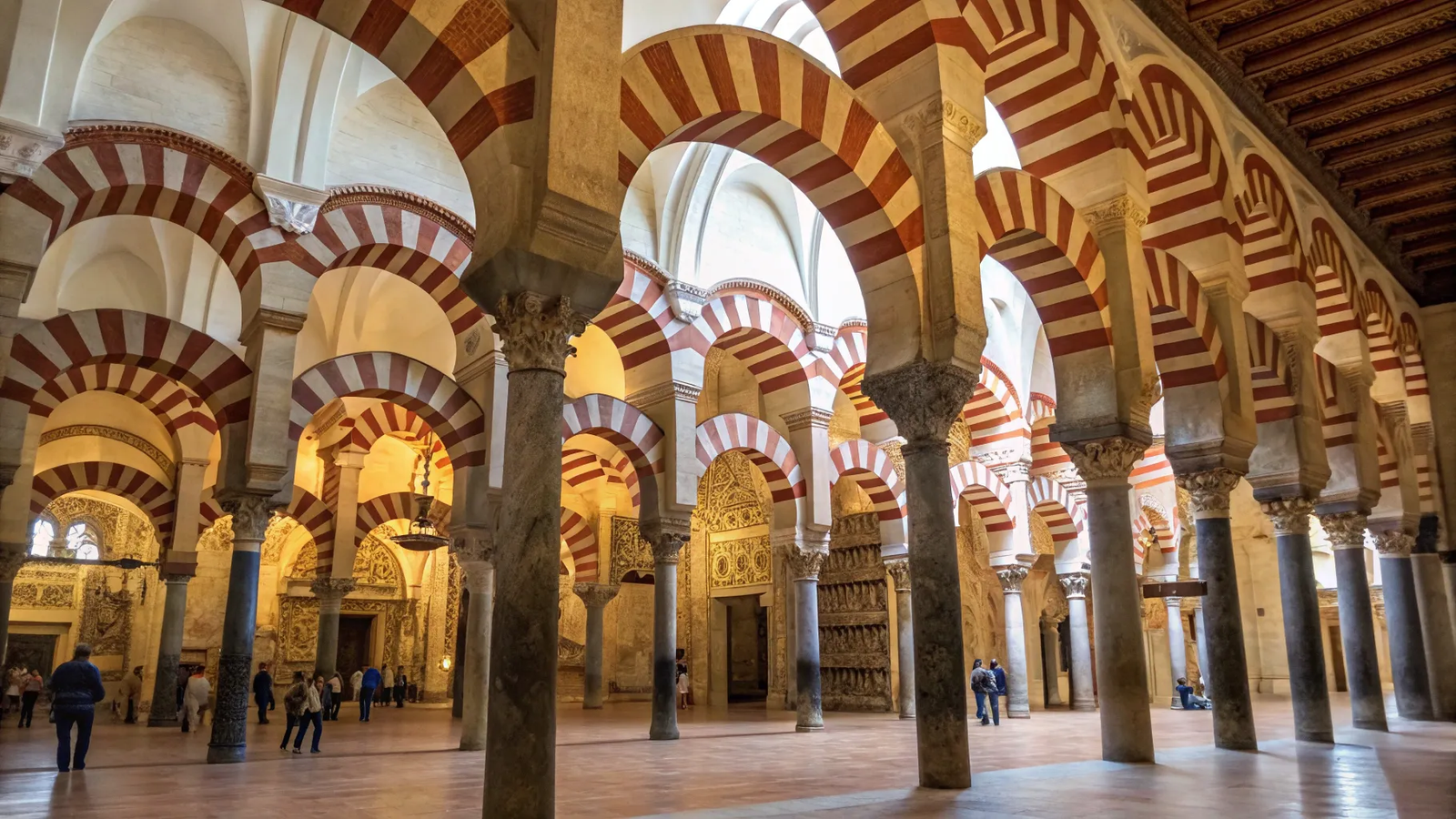
The Mezquita of Córdoba was originally built as a majestic mosque atop a small Visigoth church in 784 AD. It features an impressive array of columns and arches, decorated with mosaics and ceramic tiles. After the Reconquista, it was converted into a Catholic church, with its minaret transformed into a bell tower. The Mezquita remains a striking example of Moorish architecture and is revered for its historical and religious significance.
21. Moai Statues, Easter Island
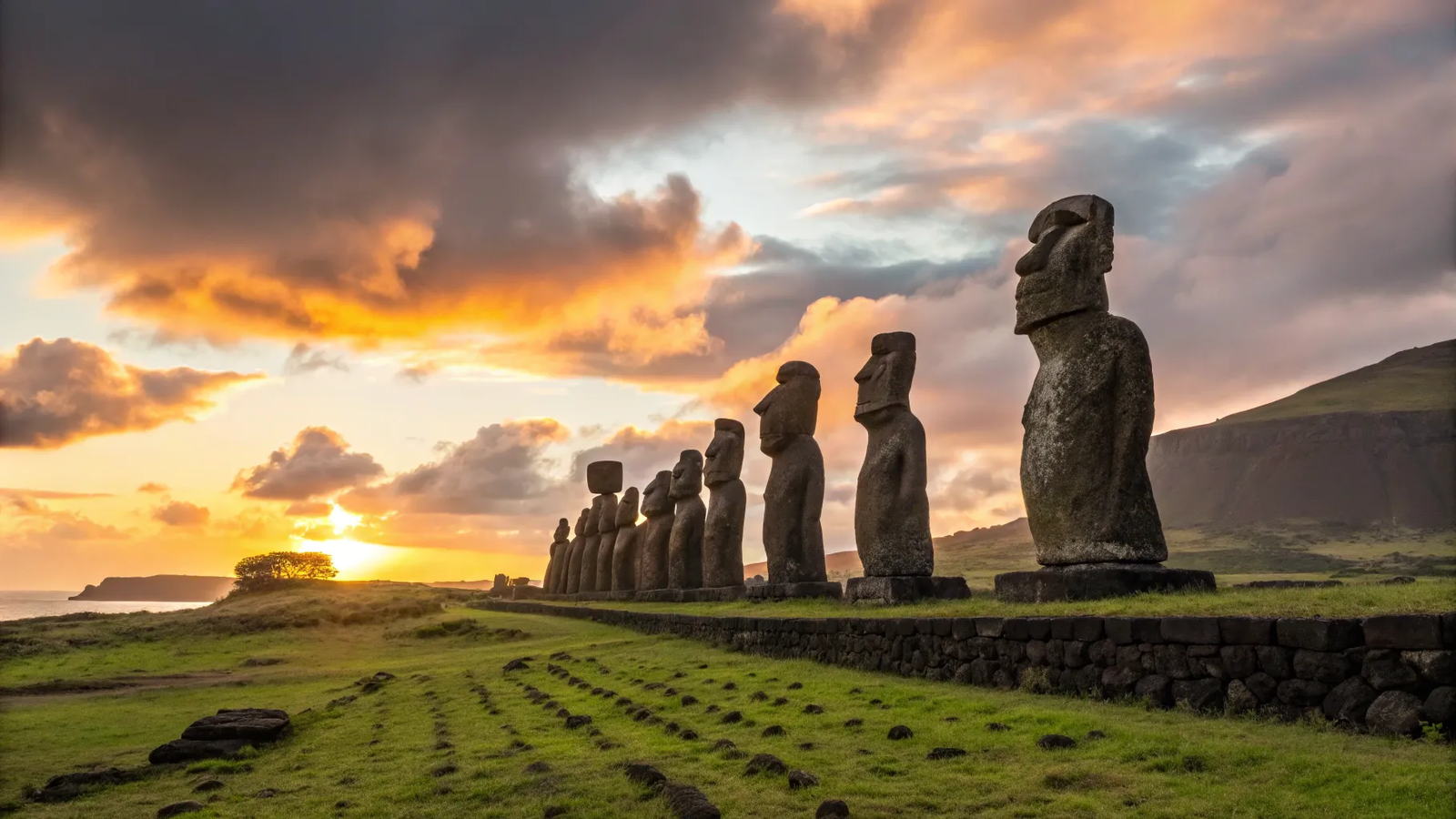
The Moai statues of Easter Island are among the most recognizable monoliths worldwide. Over 800 statues, carved from volcanic ash by the Rapa Nui people between 400 and 1500 AD, mostly face inland. The tallest weighs over 80 tons. Theories about their purpose include honoring clan ancestors and improving soil fertility. Each statue likely took nearly a year to carve using rudimentary basalt tools.
20 to 11: Fortresses, Temples, and Engineering Feats
20. Mont Saint-Michel, France
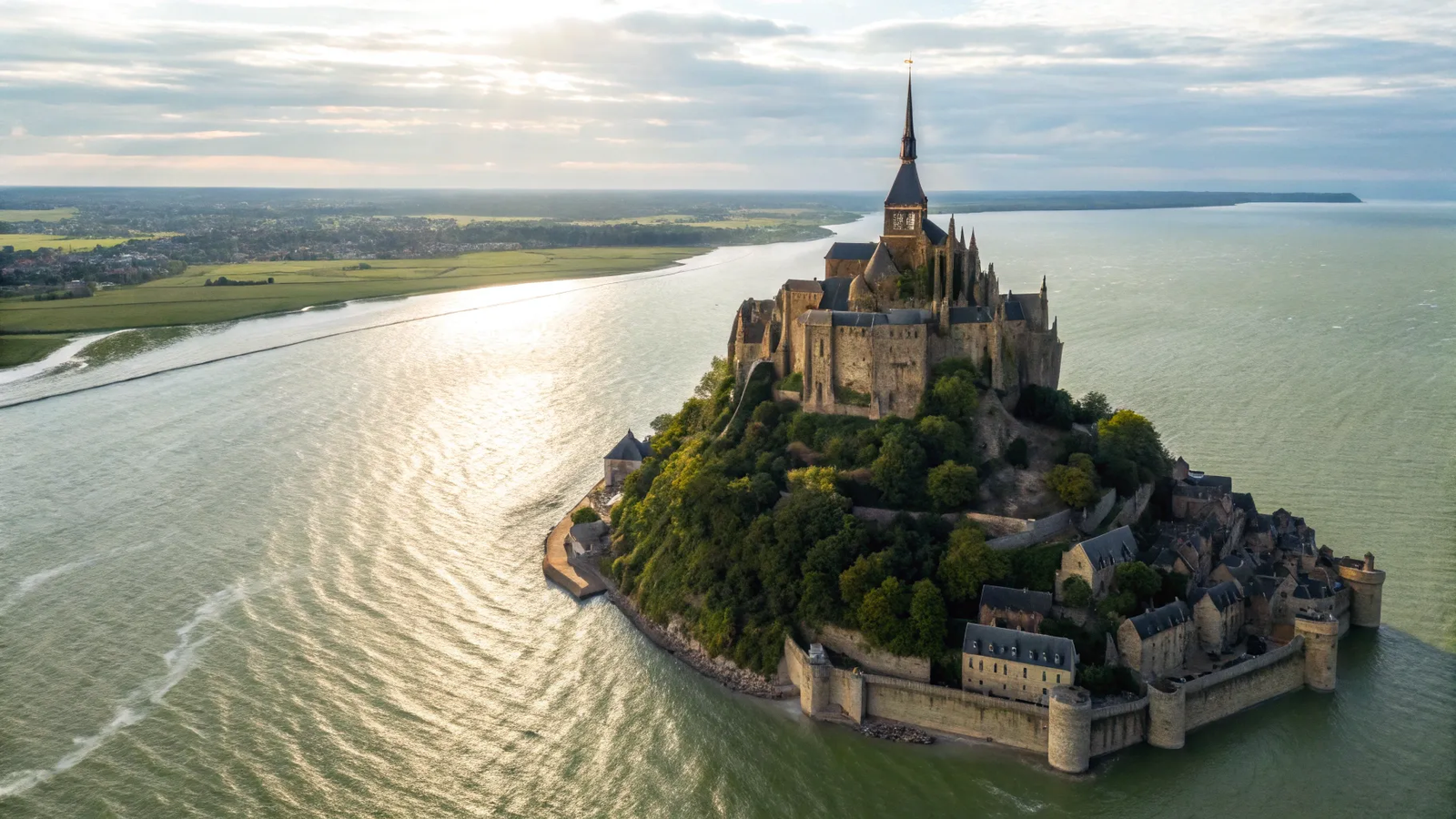
This famously fortified island lies about a kilometre off the northwestern coast of Normandy. The monastery dates back to the 8th century and remains active today. At high tide, the island appears as a floating fortress, accessible only by foot or vehicle during low tide until a bridge was added in 2014. The ancient walls and chapels provide a captivating glimpse into medieval history.
19. Karnak Temple Complex, Luxor, Egypt

Karnak is a sprawling temple complex larger than many ancient cities. Built over 2,000 years, it features temples, obelisks, and shrines with contributions from various pharaohs. Highlights include the Avenue of Sphinxes and the Hypostyle Hall with towering sandstone columns. Visitors can also admire the sacred lake and the nearby granite scarab, making Karnak a cornerstone of ancient Egyptian architecture.
18. Shwedagon Pagoda, Yangon, Myanmar
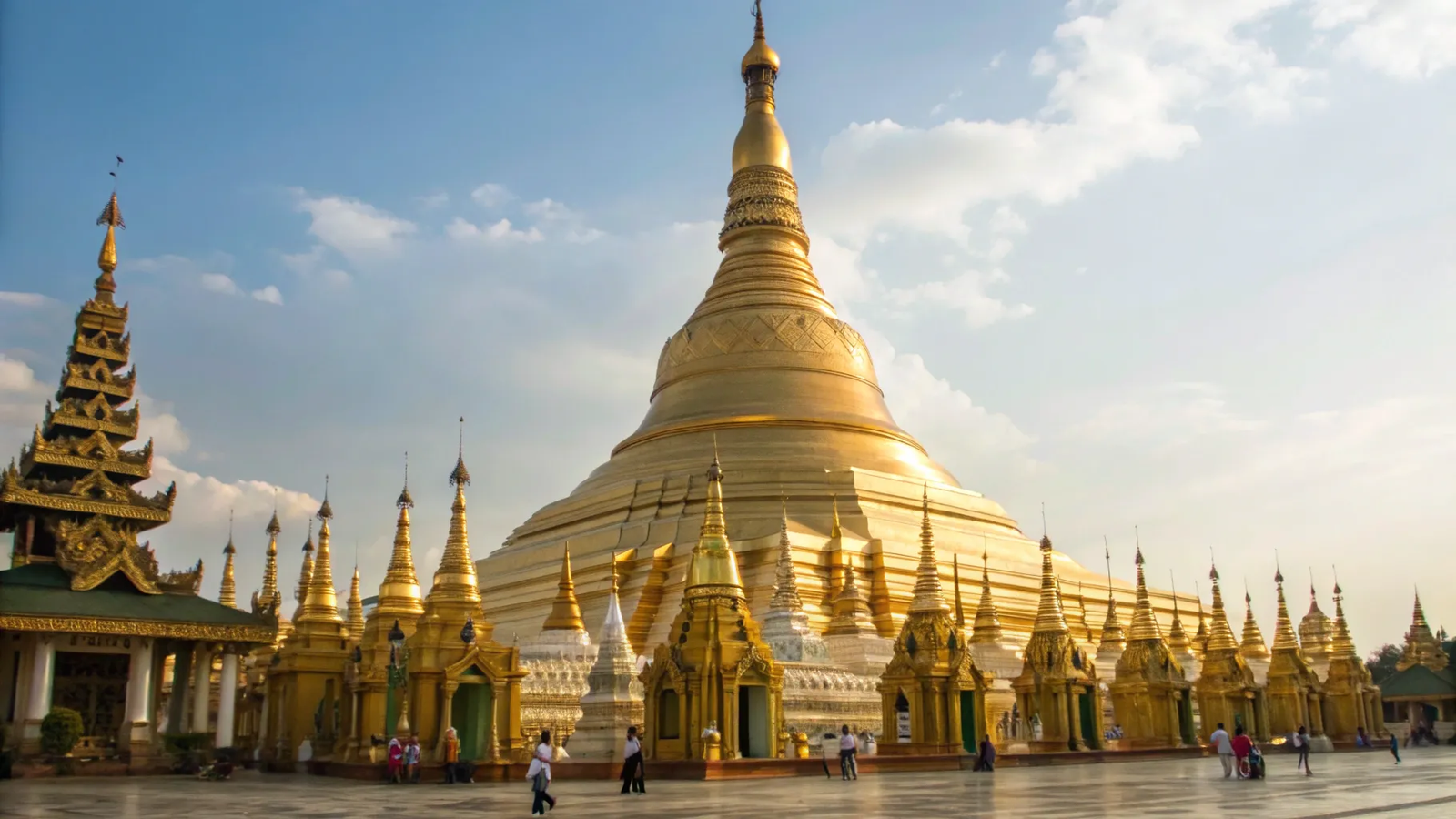
The Shwedagon Pagoda is Myanmar’s most sacred Buddhist site, believed to house a strand of Buddha’s hair and other relics. Its origins are ancient, with construction beginning between the 6th and 10th centuries AD. The temple complex is adorned with glittering stupas, with the central 326-foot-high stupa covered entirely in gold, creating a dazzling spectacle that attracts pilgrims and tourists alike.
17. Pena Palace, Portugal
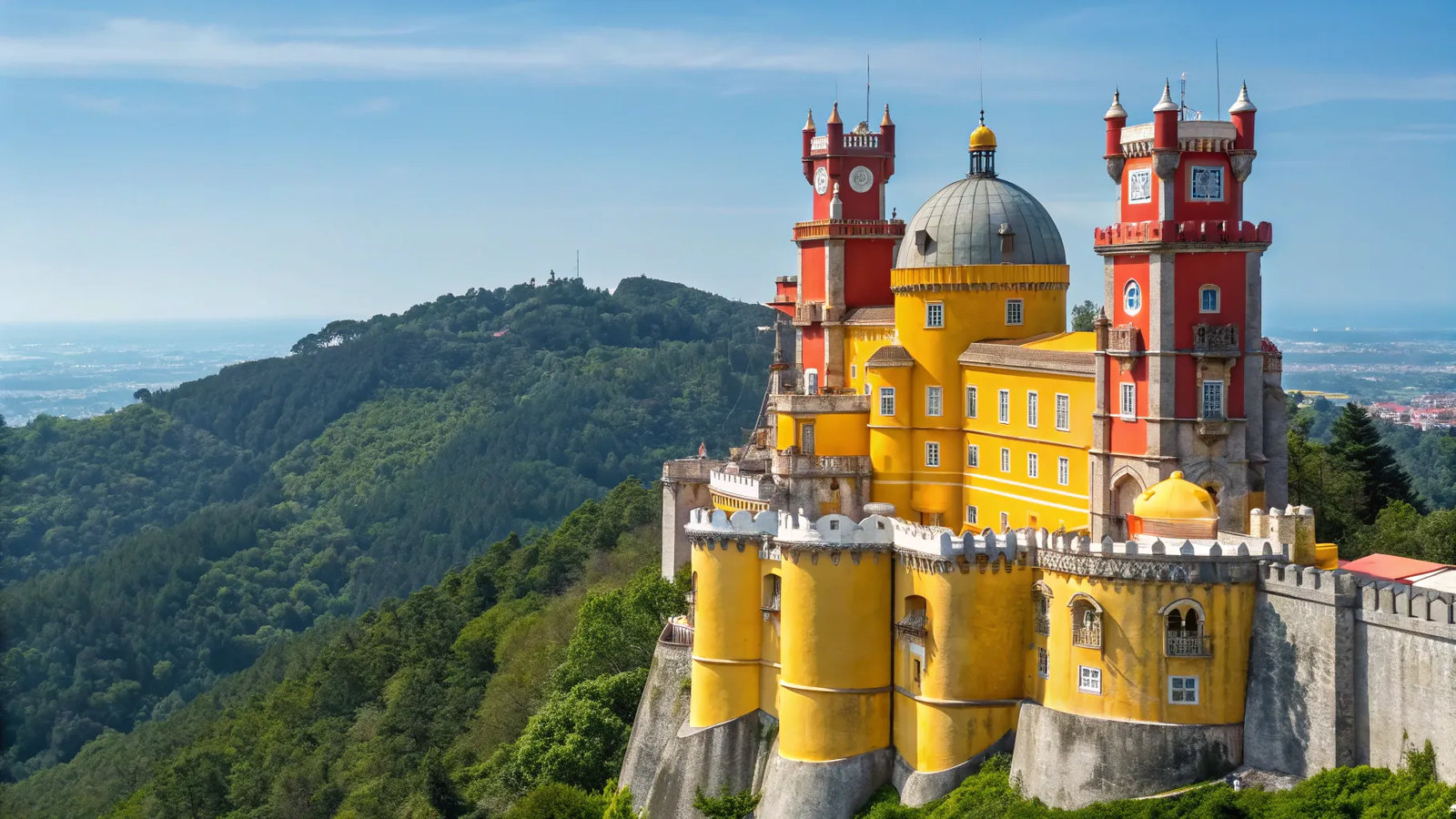
The brightly colored Pena Palace in the central mountains near Lisbon is a romanticist architectural wonder. Completed in 1854, its vivid yellows and reds stand out against the natural surroundings. The palace combines exotic and extravagant styles, with magnificent views from its ramparts and gardens. It remains one of Portugal’s most visited and cherished landmarks.
16. St. Peter’s Basilica, Vatican City
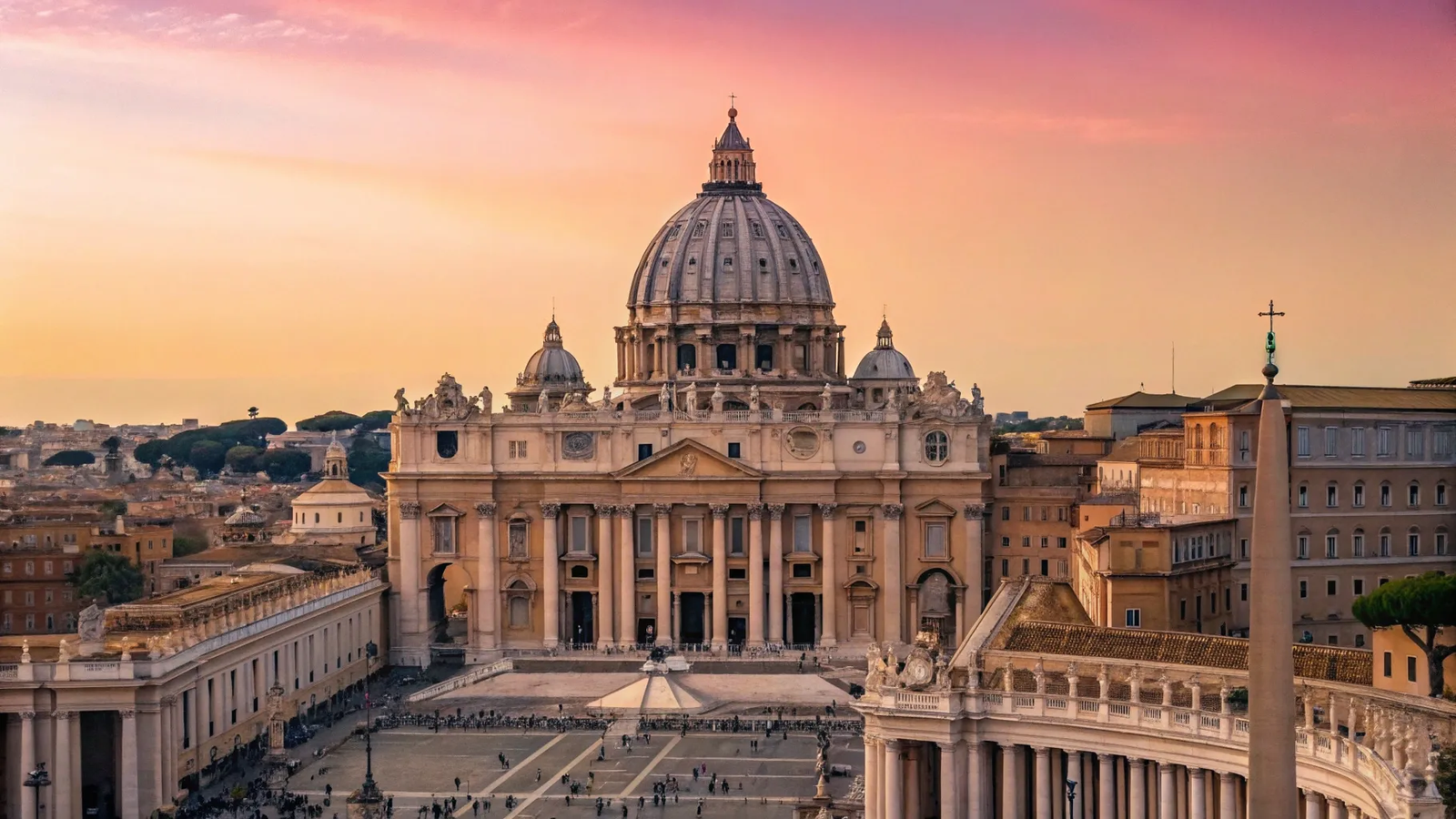
St. Peter’s Basilica is the largest church in the world and a masterpiece of Italian Renaissance architecture. Construction began in 1506, involving architects like Michelangelo. It stands on the traditional burial site of St. Peter and serves as the Pope’s principal church. The basilica hosts tens of thousands of worshippers in St. Peter’s Square and is renowned for its grand dome and artistic treasures.
15. Prambanan Temple, Indonesia
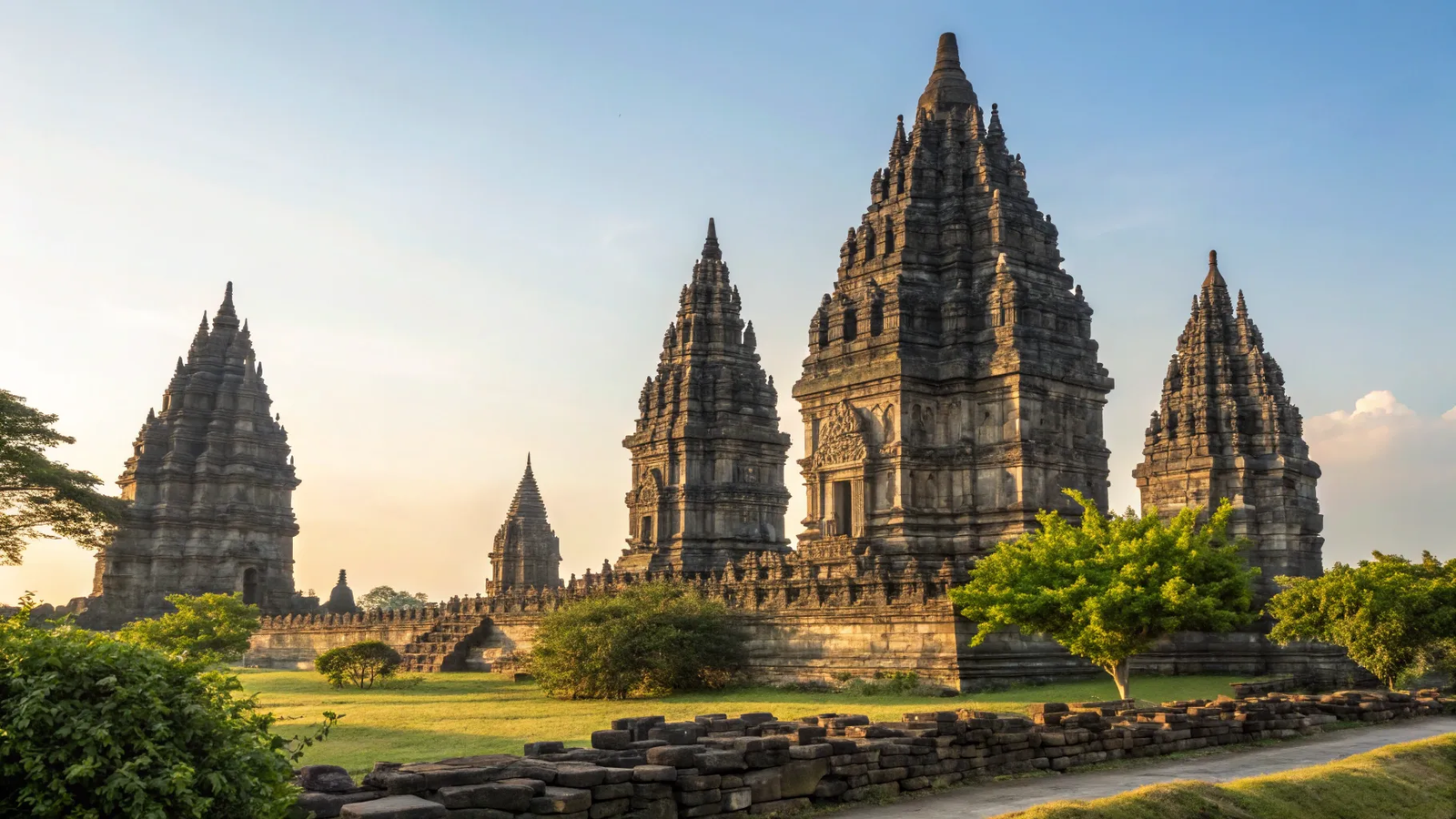
Prambanan is a 10th-century Hindu temple complex near Yogyakarta, Indonesia, symbolizing grace and complexity. It honors three Hindu gods: Vishnu, Brahma, and Shiva, with the largest temple dedicated to Shiva. After being overtaken by nature, it was rediscovered in the 18th century and restored. The temple is visible from afar and reflects the rich religious heritage of the region.
14. Eiffel Tower, Paris, France
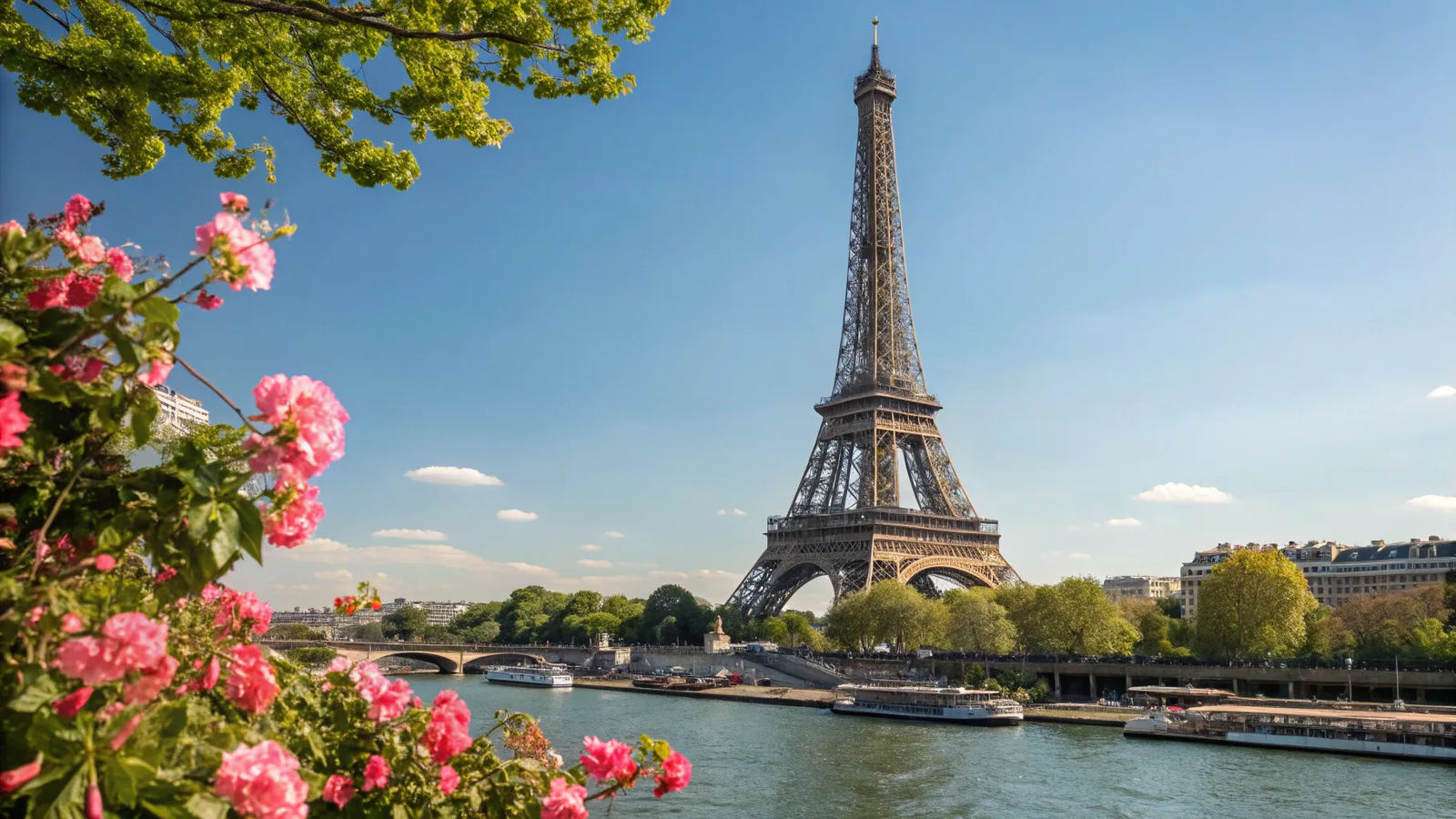
The Eiffel Tower, designed by Gustave Eiffel, is the unmistakable symbol of Paris. Built between 1887 and 1889 for the World’s Fair, it stands 324 meters tall. It was the tallest man-made structure until 1930. Visitors can take elevators to observation decks for sweeping views of Parisian boulevards and parks, experiencing one of the most beloved landmarks in the world.
13. Temple Mount, Jerusalem
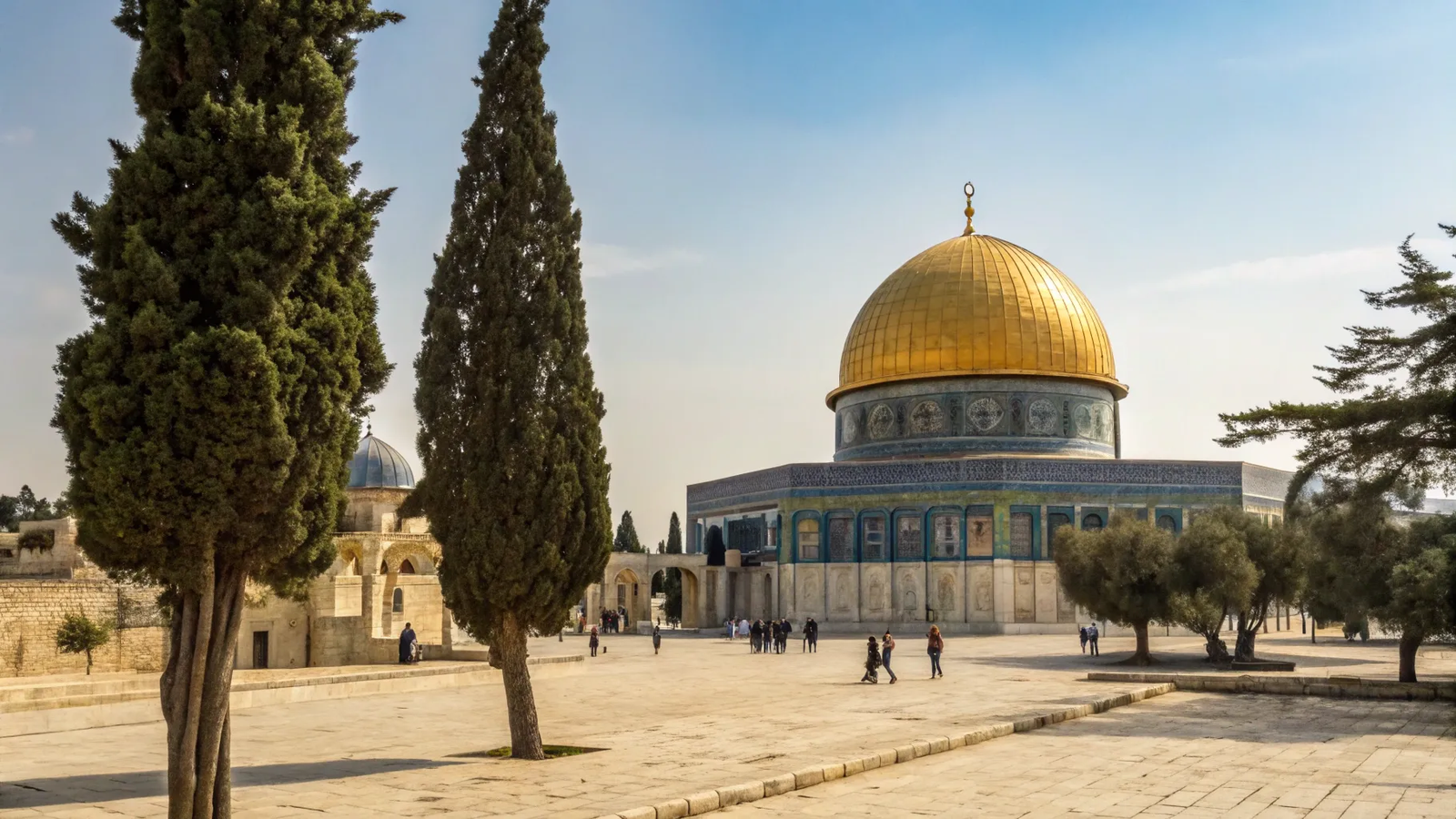
Temple Mount sits at the heart of Jerusalem’s Old City and is venerated by Judaism, Christianity, and Islam. It houses the Dome of the Rock and is the site of the first and second Jewish temples, with the Western Wall as the remaining sacred remnant. Despite centuries of conflict, the ancient limestone pavings and cypress trees create a peaceful atmosphere for visitors.
12. Great Wall of China
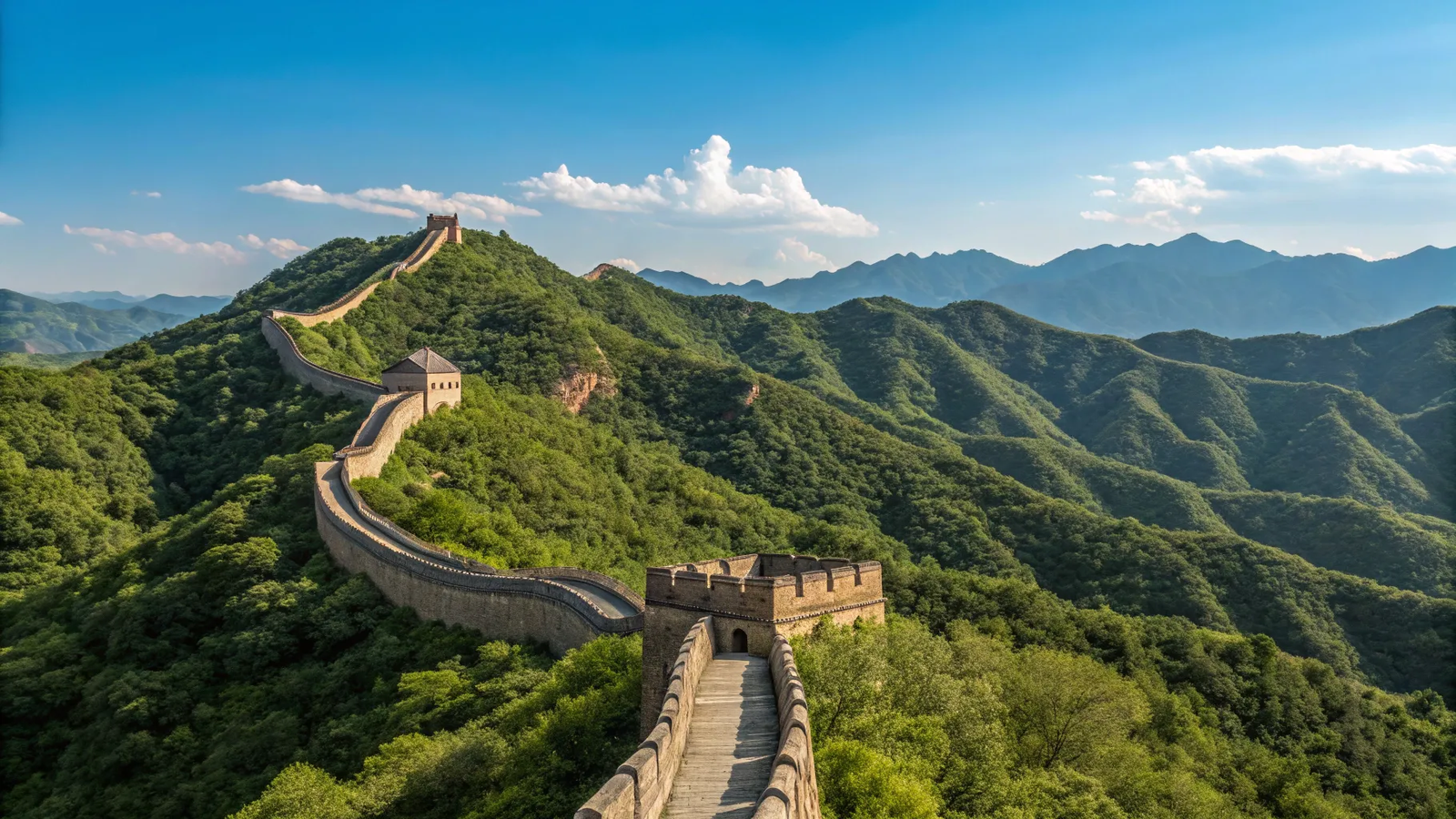
Stretching across 15 provinces, the Great Wall of China is the world’s longest man-made structure. Built over six dynasties as a defense against invaders, it spans thousands of kilometers. Some parts are in ruins, but many sections remain intact. Walking the entire wall would take around 18 months, reflecting the monumental scale of this ancient fortification.
11. Machu Picchu, Peru
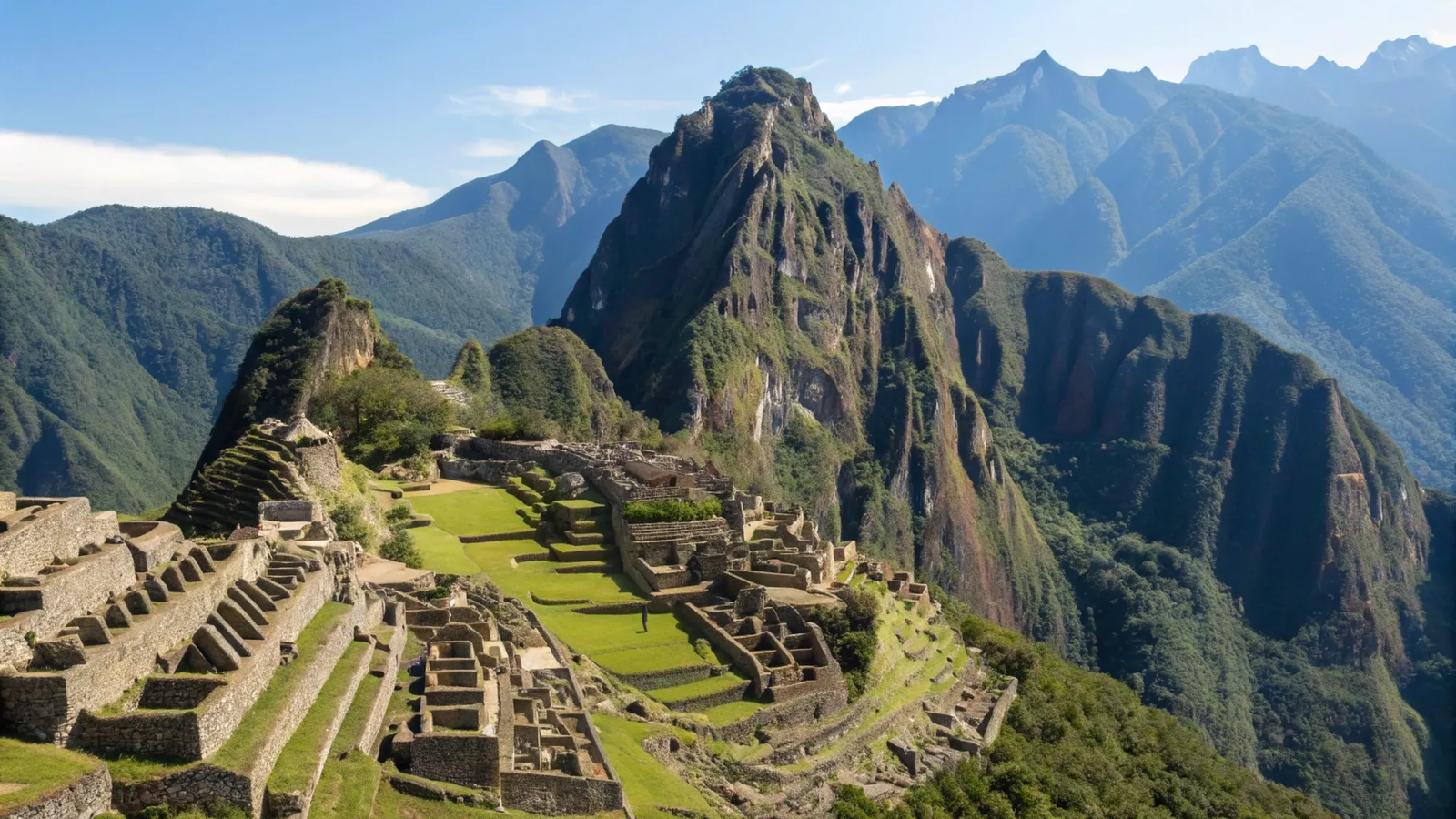
Machu Picchu is an awe-inspiring Incan city nestled in the Peruvian Andes. It served as a palace, fortress, and religious site where sacrifices were made to appease gods. Abandoned after the Spanish conquest, it was rediscovered in the early 1900s. Built from polished stones, it exemplifies classical Incan architecture and offers spectacular views, making it Peru’s most visited tourist destination.
10 to 1: Timeless Icons and Modern Marvels
10. Hagia Sophia, Istanbul, Turkey
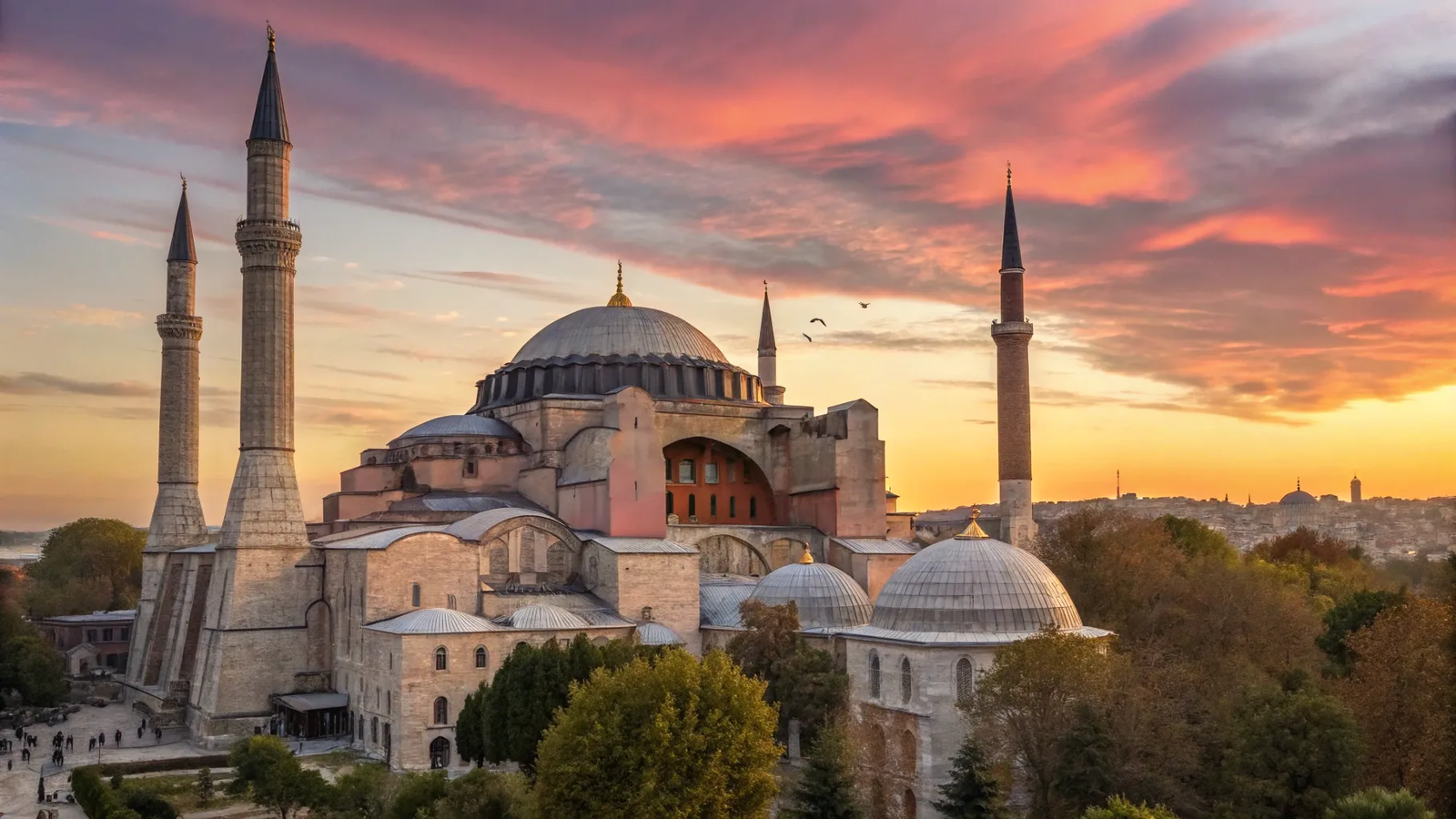
For nearly a millennium, Hagia Sophia was the world’s largest cathedral. Constructed in 537 AD as an Eastern Orthodox church, it later became an Ottoman mosque and is now a museum. Its grand dome is a marvel of Byzantine architecture. The building’s murals and artifacts narrate Istanbul’s rich and complex history, bridging cultures and faiths.
9. Empire State Building, New York City, USA

The Empire State Building is an Art Deco skyscraper and one of the most iconic symbols of New York. Completed in 1931, it was a symbol of ambition and architectural elegance. The observation deck offers panoramic views of the city day and night, while the gilded lobby impresses with its aluminum accents.
8. Petra, Jordan
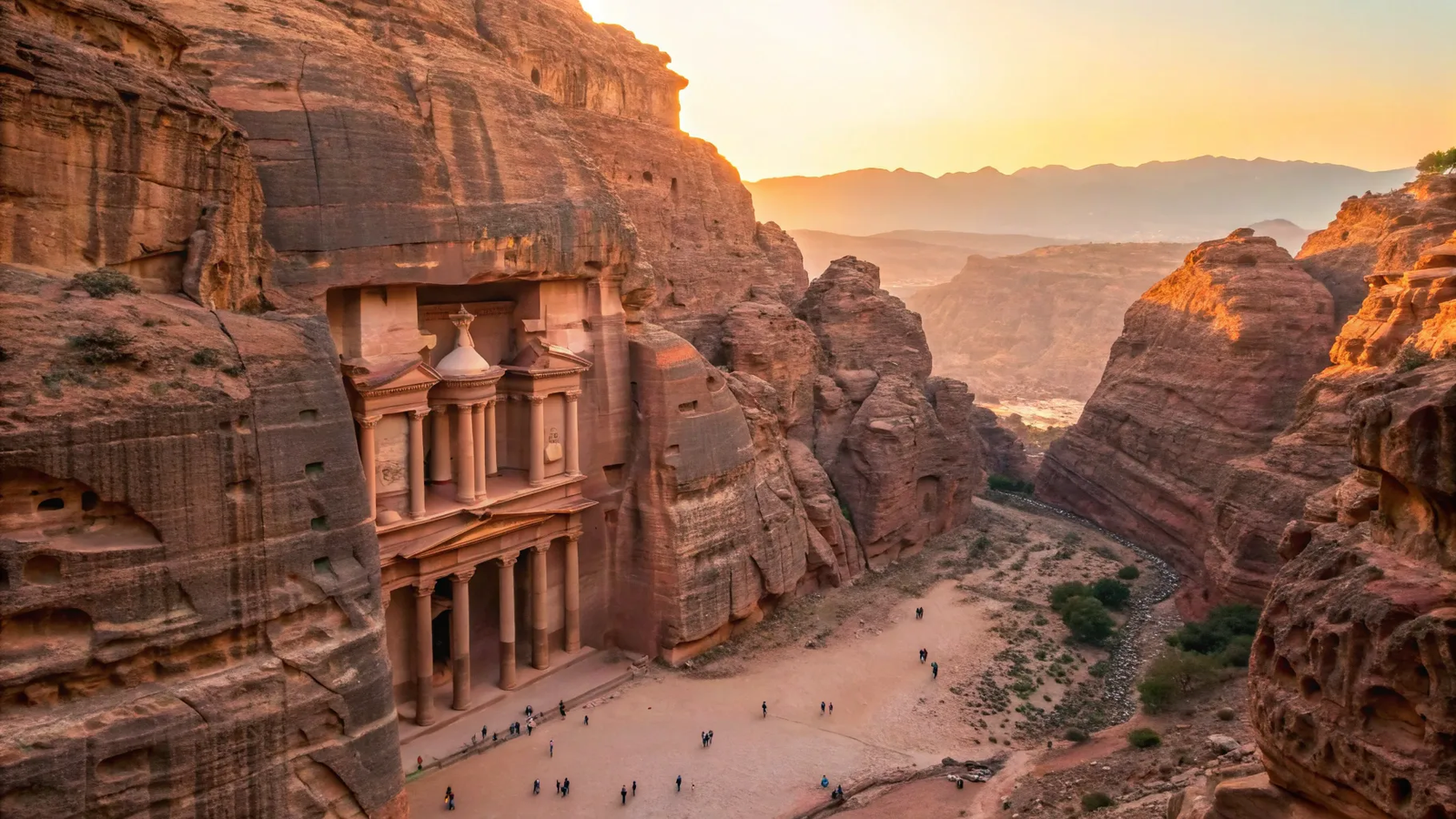
Known as the Rose City due to its pink sandstone cliffs, Petra is an ancient desert town carved by nomads thousands of years ago. Once a thriving city with gardens and markets, today its ruins include caves, temples, and tombs. The two-story Treasury carved into rock is a breathtaking facade, with an interior filled with fascinating history reminiscent of Indiana Jones adventures.
7. Santorini, Greece

Santorini is a volcanic island famed for its whitewashed buildings with blue domes perched atop cliffs overlooking the Aegean Sea. Renowned for its enviable sunsets, gourmet tavernas, volcanic beaches, and luxurious cruises, Santorini is one of Greece’s most exclusive and picturesque islands, offering visitors a unique Mediterranean experience.
6. Ajanta Caves, India
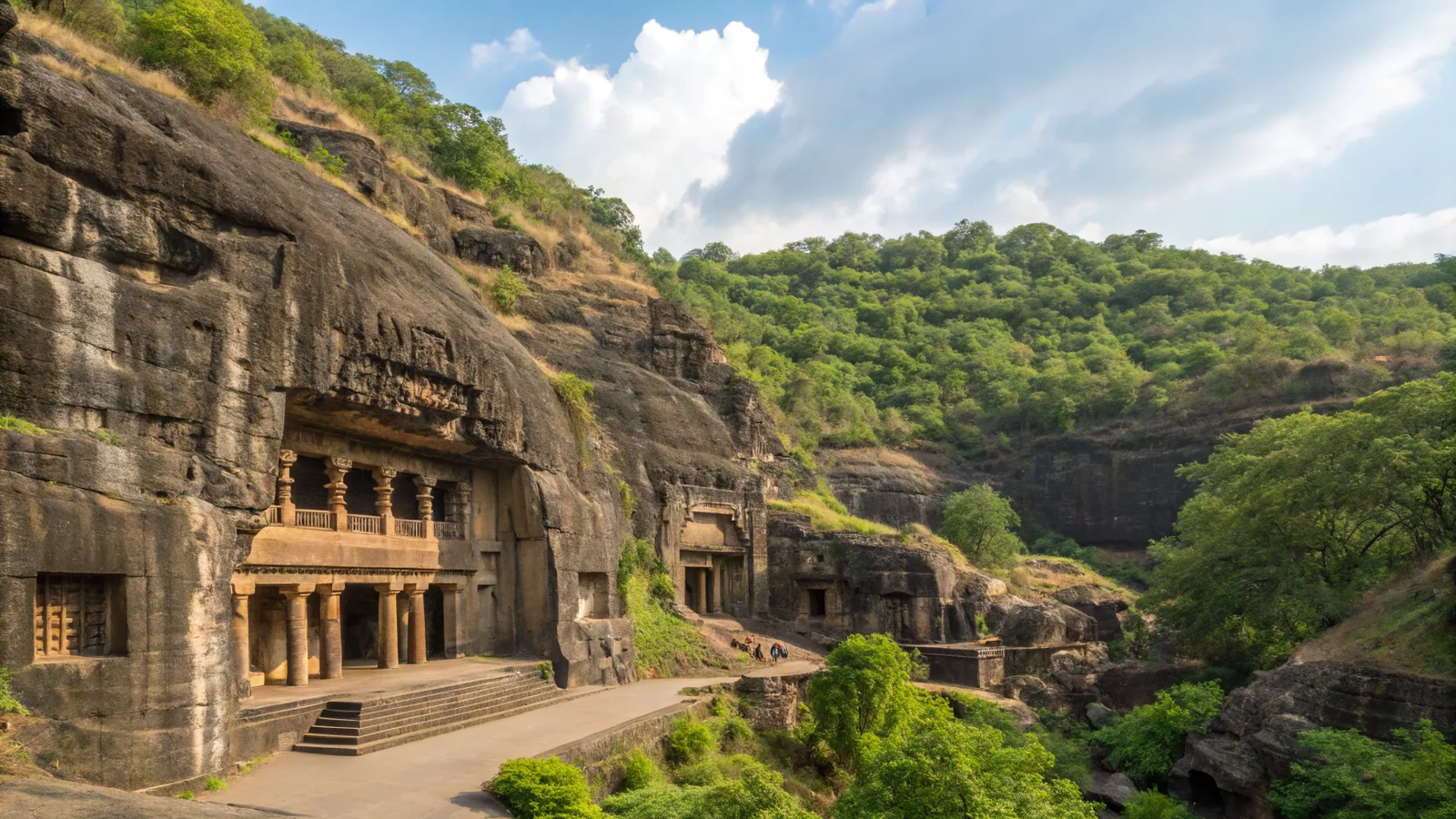
The Ajanta Caves in Maharashtra are a group of Buddhist, Hindu, and Jain monasteries, temples, and caves carved into basalt cliffs dating back to 600 AD. Out of 100 caves, 34 are open to the public. Highlights include the Kyasa Temple dedicated to Lord Shiva and the large preaching Buddha. The caves are renowned for their monolithic sculptures and intricate artwork.
5. Panama Canal, Panama
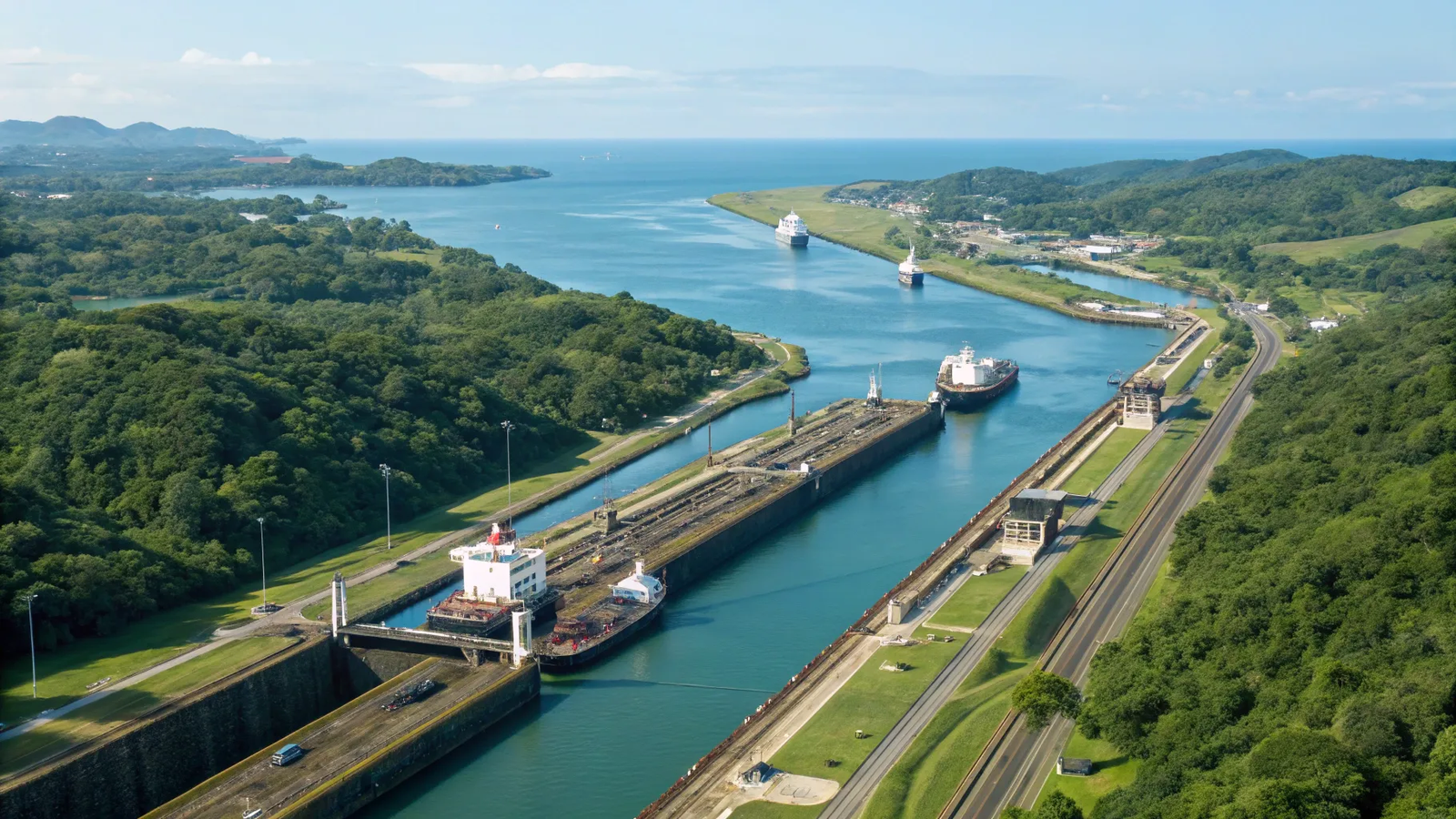
Spanning 51 miles across Panama, the Panama Canal connects the Atlantic and Pacific Oceans through a series of canal locks. Built in the early 20th century, it is one of the most complex engineering projects of the last 150 years. The canal drastically reduces travel time for ships, eliminating the need for the dangerous route around South America’s Cape Horn, and remains vital for global commerce.
4. Angkor, Cambodia

Angkor is an archaeological treasure trove in northern Cambodia, featuring some of the world’s most important cultural remains. This includes the massive Angkor Wat temple, the Bayon temple with its many stone faces, and Ta Prohm, entwined with towering trees. Angkor was the Khmer capital from the 9th to 14th centuries and significantly influenced Southeast Asian art and architecture.
3. International Space Station (ISS)

The ISS is humanity’s most remote outpost, orbiting about 250 miles above Earth. Built through international cooperation starting in the 1990s, the station serves as a laboratory for scientific research with living quarters comparable to a large house. Since 2000, it has hosted nearly 300 astronauts, symbolizing global unity in space exploration.
2. The Colosseum, Rome, Italy
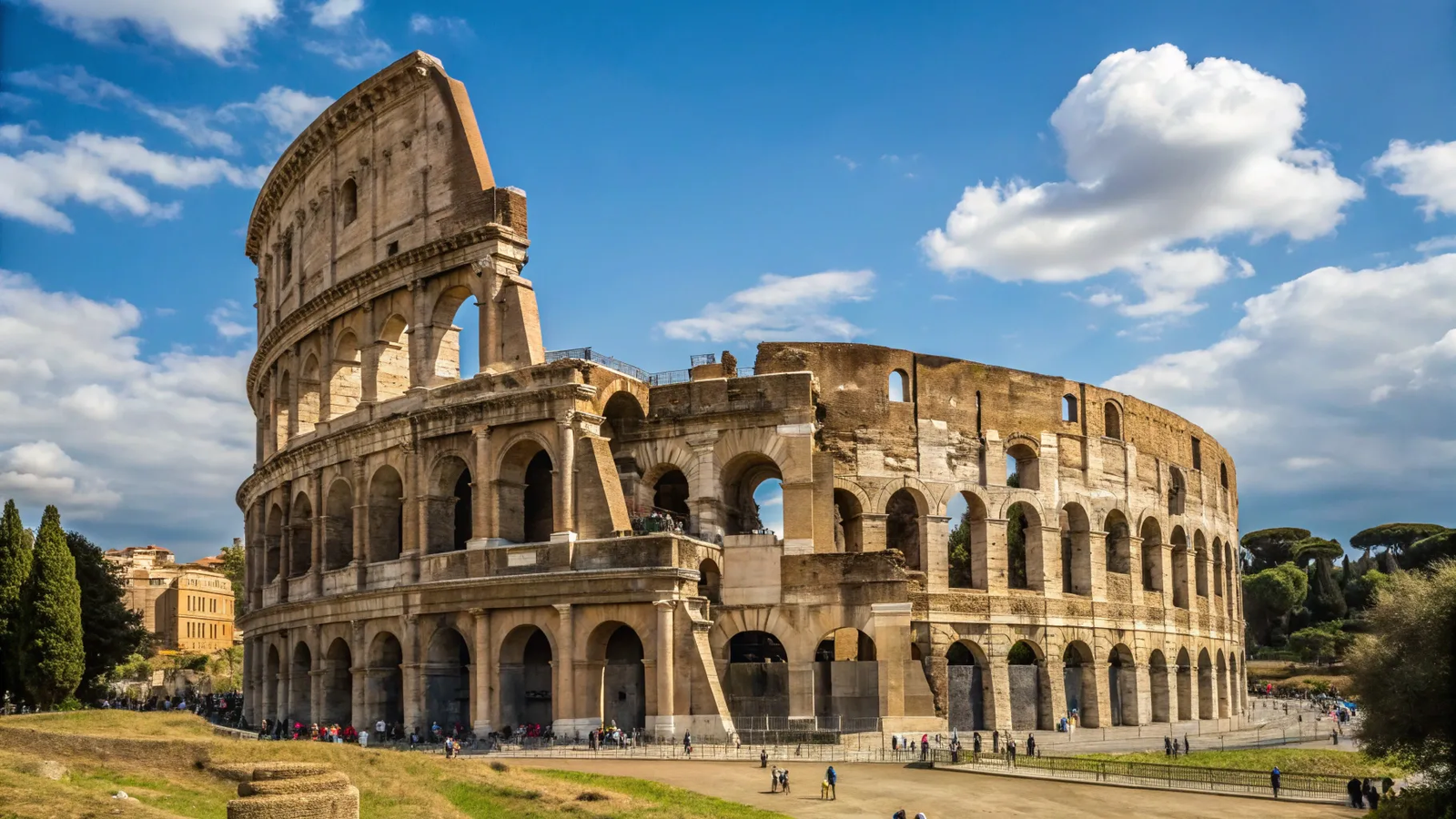
The Colosseum is one of the most famous buildings ever constructed and a pinnacle of Roman architecture. This massive oval amphitheatre, nearly 2,000 years old, could hold 80,000 spectators for gladiatorial contests, animal hunts, and mock sea battles. Its three-story arcade walls and subterranean tunnels offer a glimpse into ancient Roman entertainment and engineering genius.
1. Pyramids of Giza, Egypt
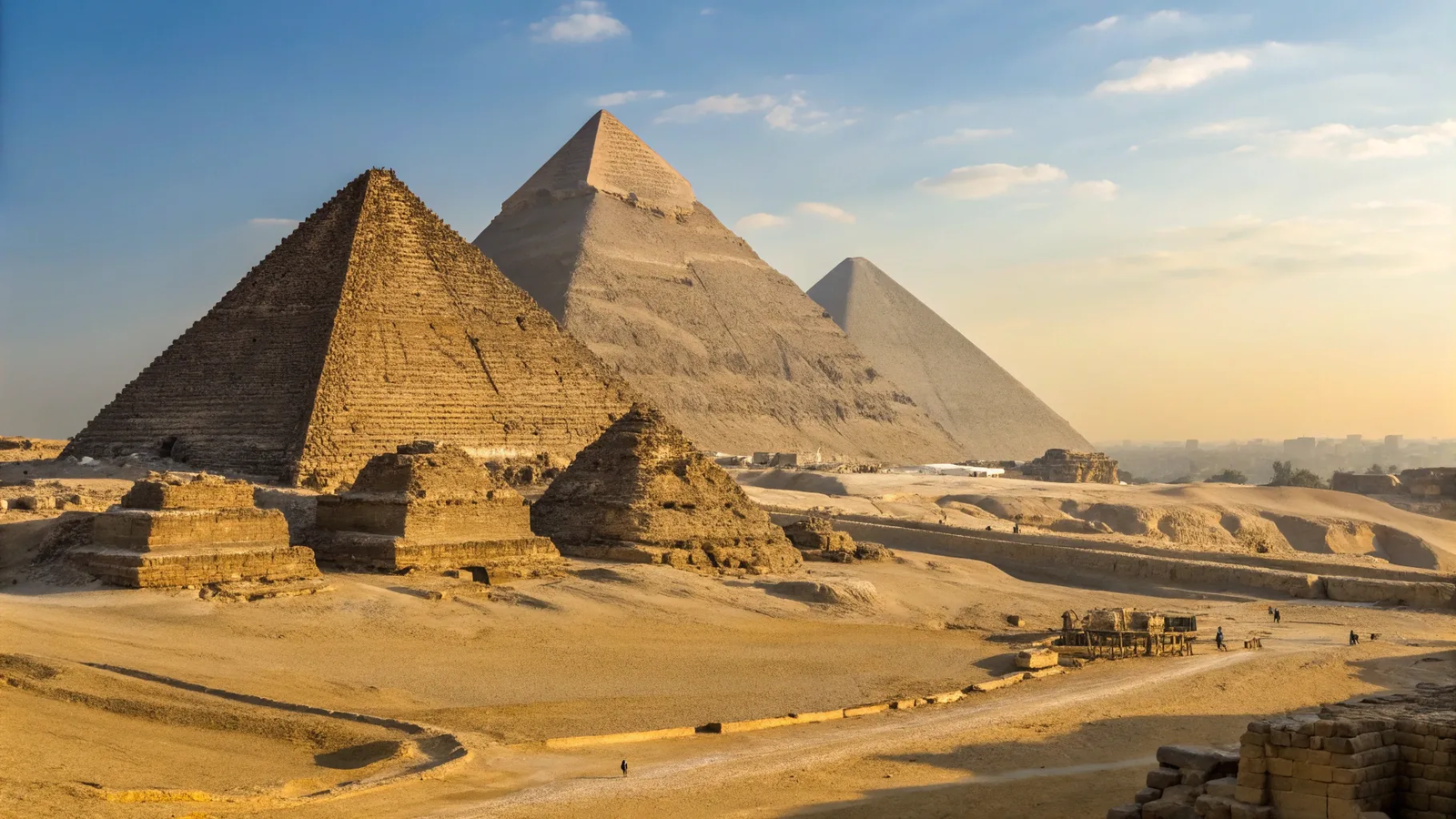
Arguably the world’s most famous landmark, the Pyramids of Giza stand on the outskirts of Cairo, overlooking the Sahara Desert. Built during Egypt’s Old Kingdom’s fourth dynasty over three generations, the Great Pyramid of Khufu is the oldest and only surviving wonder of the ancient world. At 455 feet tall, it remains the largest pyramid in Egypt, a monumental testament to ancient engineering and religious belief.
Frequently Asked Questions (FAQ)
What makes a man-made structure a “wonder”?
A man-made structure becomes a “wonder” due to its outstanding architectural, engineering, or cultural significance, often combined with historical importance, aesthetic beauty, or uniqueness. Wonders inspire awe and represent peak achievements of human creativity and ingenuity.
Are all the Greatest Man-Made Wonders ancient?
No, while many wonders are ancient, this list includes modern marvels such as the International Space Station, the Sydney Opera House, and the Panama Canal, highlighting that human ingenuity continues to produce extraordinary achievements.
Why is the Great Pyramid of Giza considered the only surviving ancient wonder?
The Great Pyramid of Giza is the only surviving wonder of the original Seven Wonders of the Ancient World because it has withstood natural disasters and human destruction that eliminated the others. Its massive scale and solid construction have ensured its endurance for over 4,500 years.
Can visitors access all these wonders?
Most wonders are open to the public and serve as popular tourist destinations. However, some sites, like the International Space Station, have restricted access, while others may have limited visiting hours or require special permits.
How do these wonders reflect cultural diversity?
Each wonder reflects the culture, religion, and technological capabilities of its creators, providing insight into diverse civilizations across continents and epochs. Together, they celebrate humanity’s shared heritage and the variety of human expression.
Conclusion
The Greatest Man-Made Wonders of the world are more than just incredible structures; they are symbols of human history, culture, and aspiration. From the ancient pyramids of Egypt to the futuristic Gardens by the Bay in Singapore, these wonders showcase the breadth and depth of human creativity. Exploring these sites offers a journey through time and across continents, revealing stories of faith, power, artistry, and innovation.
As we look to the future, these wonders remind us of what humanity can achieve, inspiring new generations to build, create, and dream on a grand scale.

